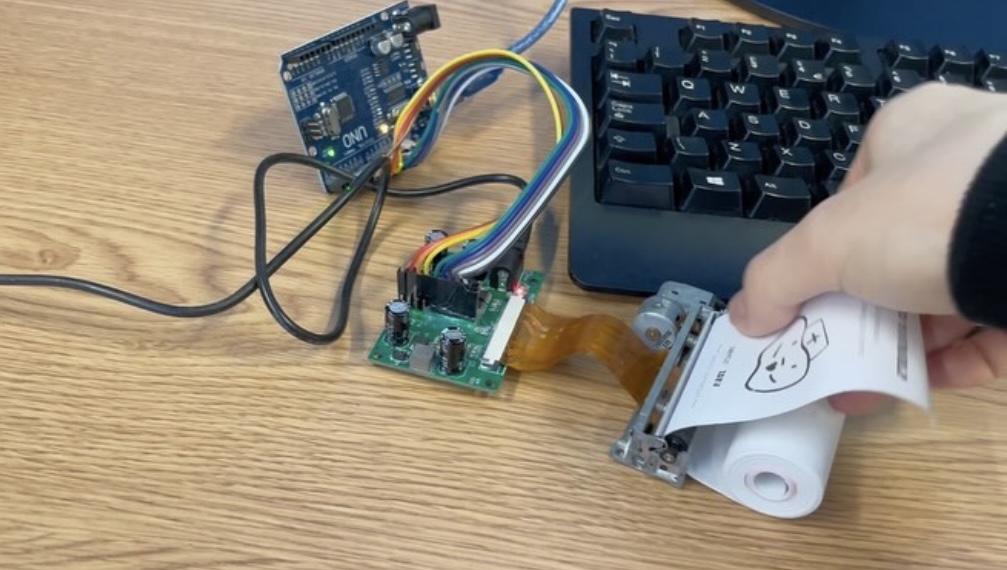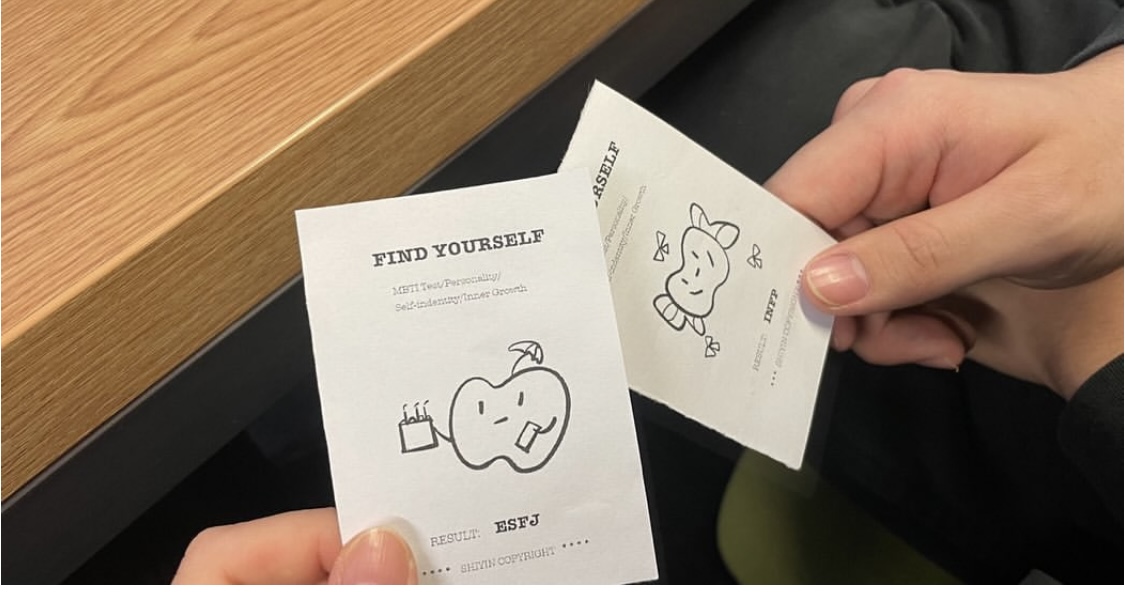MA Experience Design
Teaching Archive from MA Experience Design, University of Plymouth, 2023-2025At the University of Plymouth, I led the MA in Experience Design. The programme centred on creating bespoke experiences for specific audiences to allow them to engage with real-world issues.
Design Lab
The two core modules of the course, Design Lab 1 and Design Lab 2 focused on theory and practical workshops connected to storytelling, immersion, interaction and using experimental research methods to bring a deep connection with these three areas to the intended audience of the artwork being created.
In order to begin the idea of asking students to think about what an “experience” can be, I decided to produce hand-stitched module guides and reading lists that would encourage reading, playing and watching in relation to the key theories being taught on the course. It was intended to demonstrate that Experience Design can be seen also be seen as a philosophical approach and applied to anything.

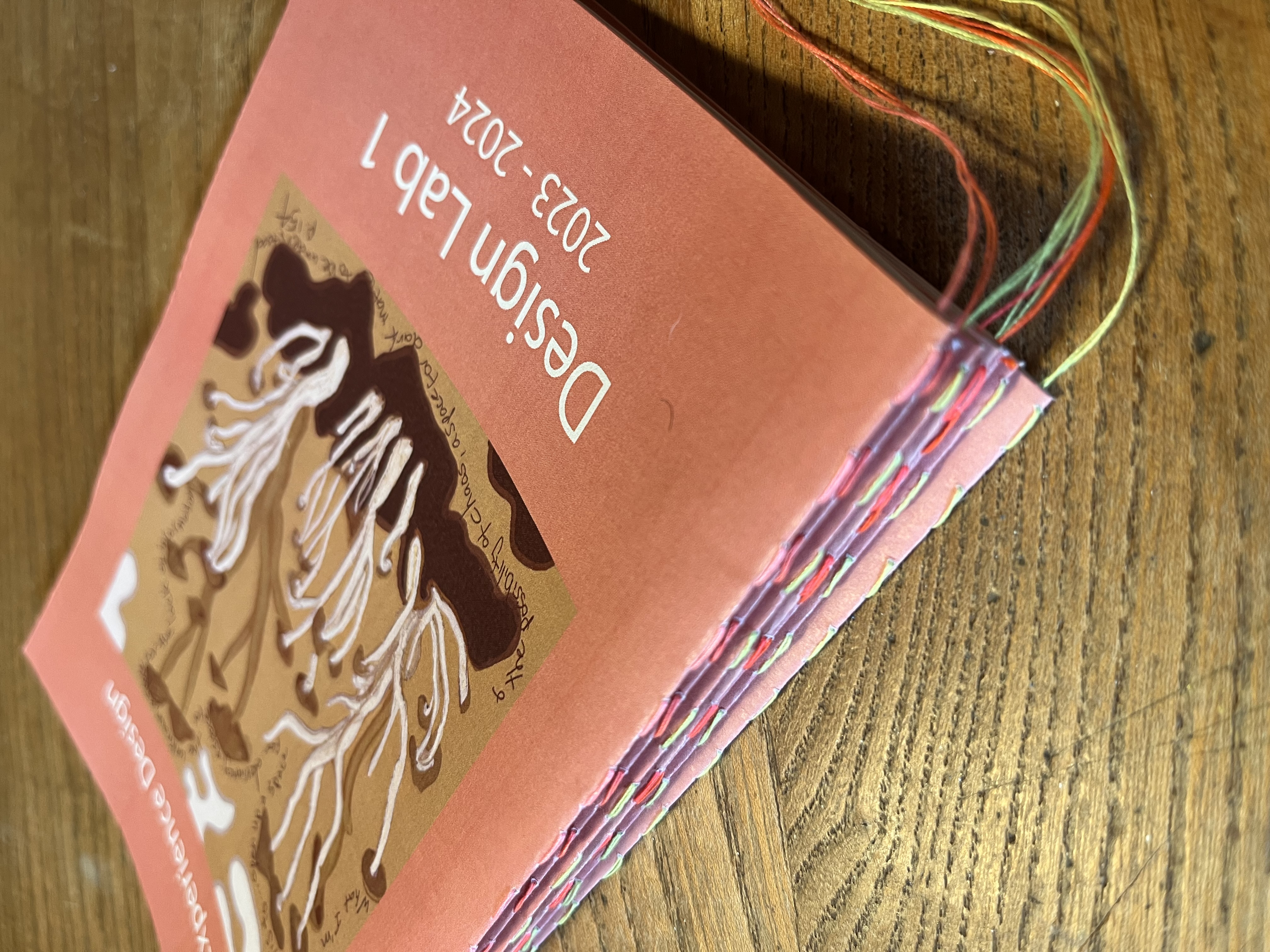

Later, as a way of critically engaging with Higher Education’s desire to make all courses standardised, including the way in which work is presented to students on digital learning platforms and feedback on assessments, I created an official course stamp for use when returning written feedback. It was made as a prompt to allow students to question, what an art education is for, what it should look like, and again what is an “experience” and how can we use an experience design approach to alter the mundane and critique current systems.


Theory was taught as a lecture followed by a practical workshop to engage with ideas around knowing through making (Ingold). Topics covered included areas such as:
Experience. What is the “experience” part of Experience Design. This was explored through professional practice as well as thinking about the role of the audience, story/narrative and how interaction and a sense of immersion can be brought about through these when combined with research and exploration of materials and modes of communication.
Fulldome. Mike Phillips taught theory related to fulldome experiences, as we were also lucky enough to have one on campus in the Immersive Vision Theatre.
VIrtual Reality. The connection between VR and histories of magic. Specifically, how ideas from the history of magic and illusion can support immersive storytelling with emerging technologies.



Critical Technologies. The politics behind Big Tech and the impact of virtual, digital and analogue materials on the natural world:






Alternative Futures. For example, students used Fraser’s (2016) “Four Futures: Life After Capitalism” to imagine alternative futures in Roblox. Fraser writes that it is easier to imagine the end of the world than to imagine the end of Capitalism. This idea was also used to connect students to later classes and workshops about Speculative Design.



Information Theory. It was shared how designing experiences requires an understanding of information theory on several levels. First in thinking about what information/ story/narrative/ data will be conveyed in the experience. Secondly, to understand that information systems affect how we create an experience. This was explored in relation to systems, culture, history and more-than-human ways of communicating. Related to this, students were also taught multimodal theory and how the combining of modes of communication affects experience but also how the study of modes can bring about greater insight into the topic students chose to work with. To understand this, questions were asked such as: What is a mode? What does it mean to “transduct” information, a story element or an entire narrative from one mode to another? How do modes relate to culture and history? What is lost and what is gained when one mode is used over another?


Design. Theories connected to design were presented to engage students in how concepts such as affordances, onboarding and offboarding can be used to help craft Experience Design work, but also to show how Experience Design differs from Product Design. We also explored design in relation the consumption and the climate crisis.
The Anthropocene. In relation to the climate crisis we also studied The Anthropocene and how art and Experience Design specfically can provide new ways of interpreting the role of being human. Some of this connected to critiquing the strive for artifical intelligence in telation to natural intellegence. How digital artists like others need to question how we use cenrtain materials and for what purposes. This colosely connected to research methods taught such as post-humanism, new materialities and sensory ethnography.
Game Theory and Play. For example ideas connected to serious gaming where the primary purpose is something that exists beyond the game play. To do this we also explore gaming mechanics, aesthetics, rules and risks etc.
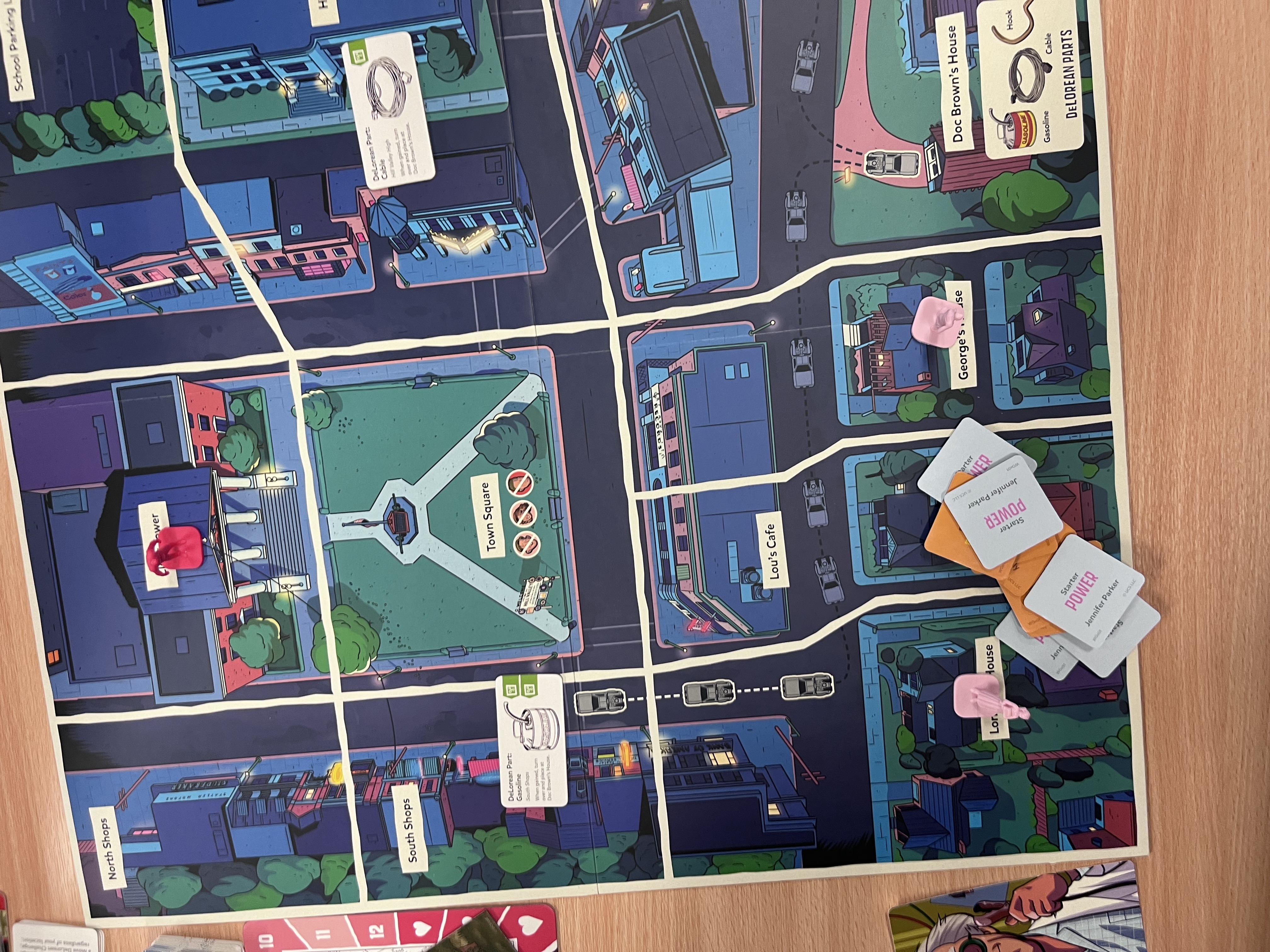
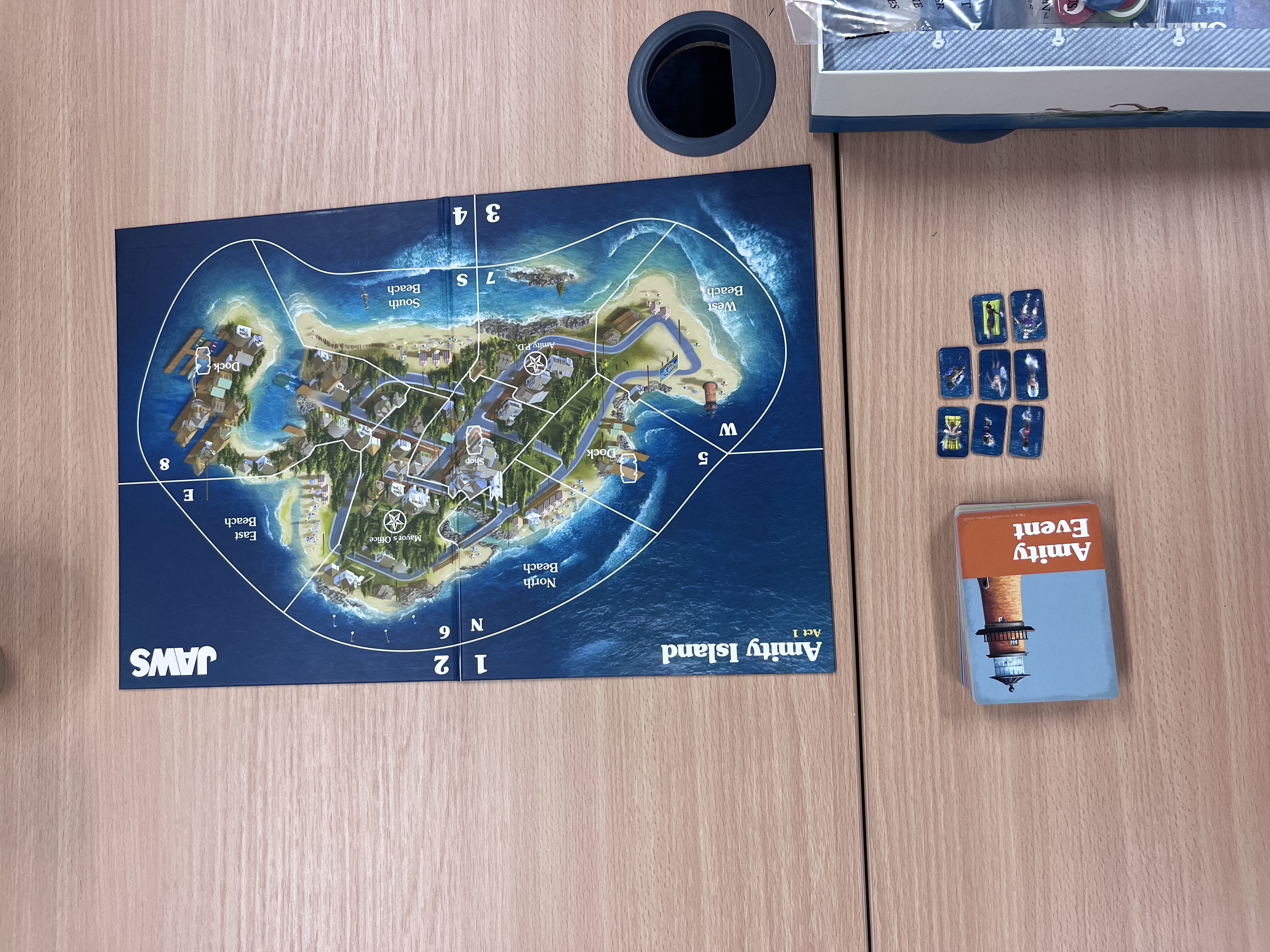
Images: Workshop on Play
Critical reflections on AI. In 2024 we hosted a visiting talk by Eleanor Dare from the University of Cambridge who spoke about her work in this area. Then in 2025, we hosted a visiting scholar Thomas Enemark Lundtofte from the University of Southern Denmark who also shared his research about children and AI.
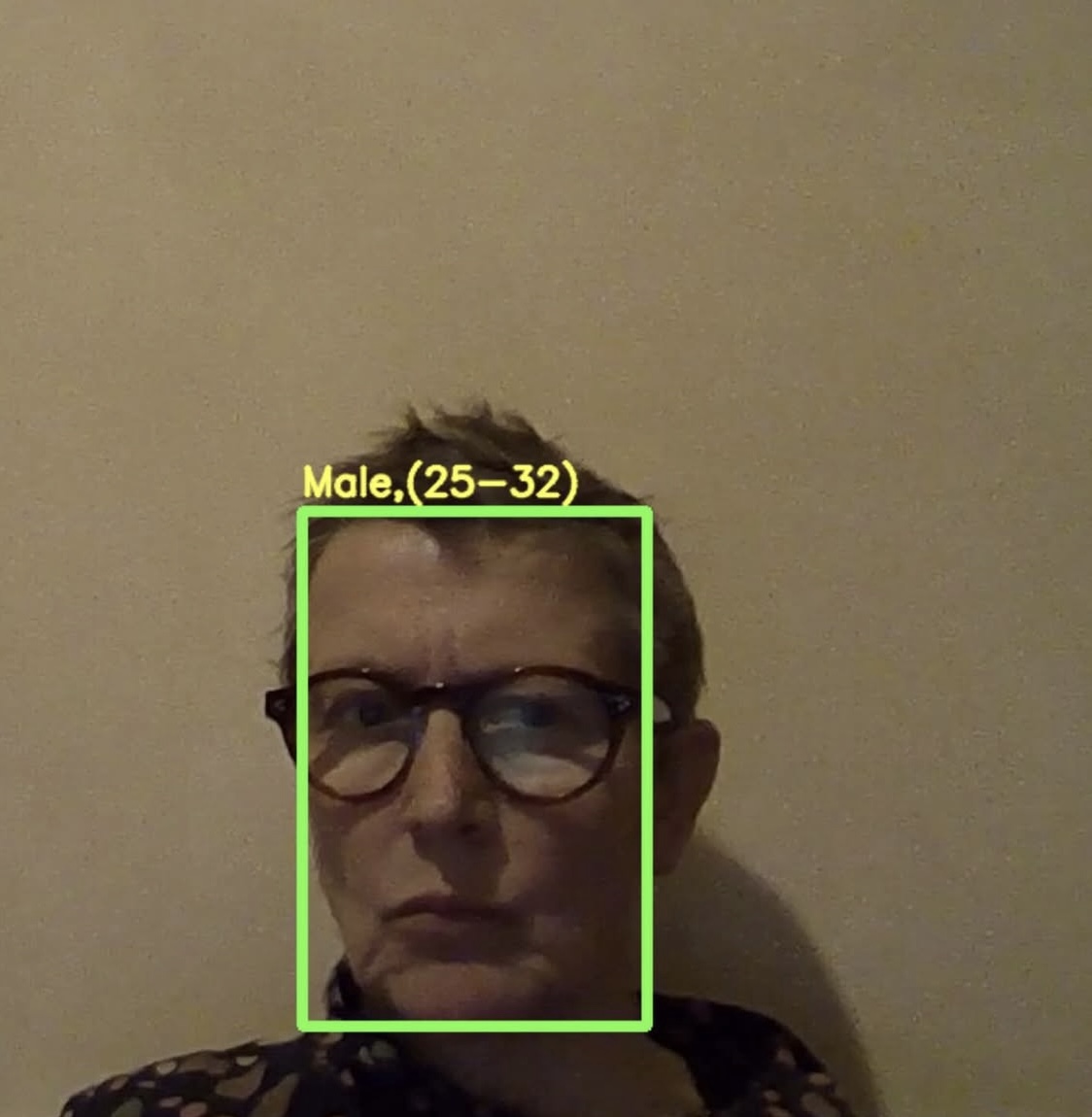
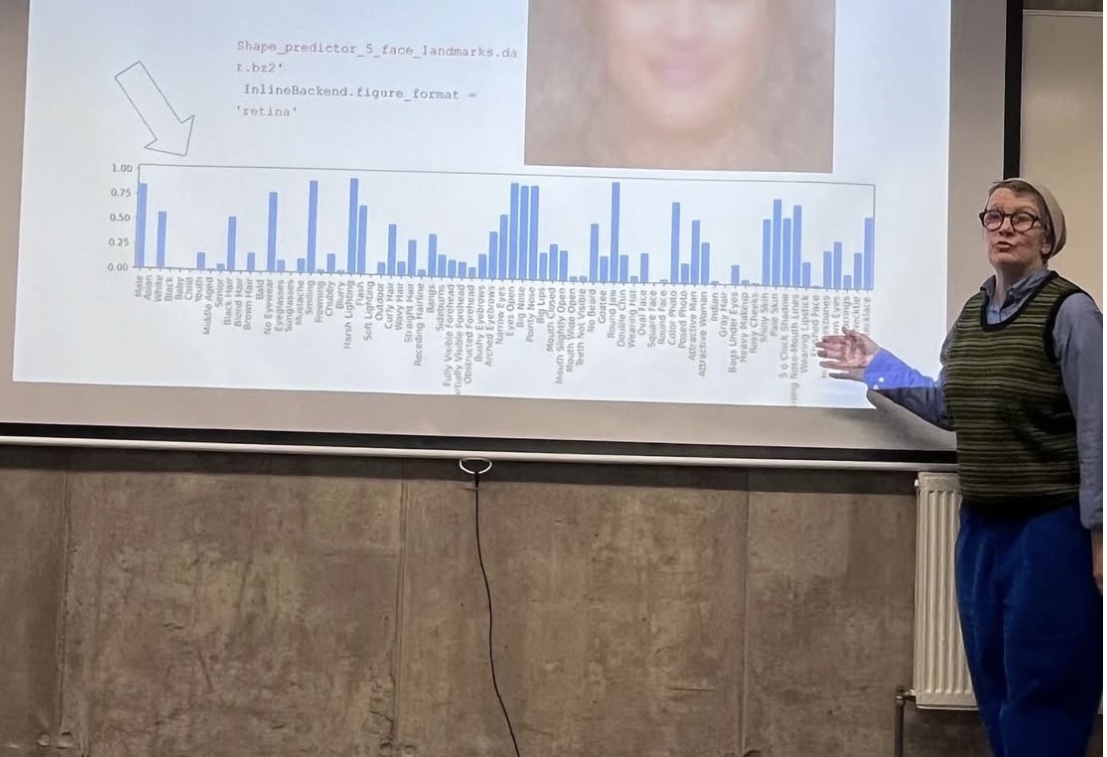
Together we explored Nick Souansis’ book Unflattening and ideas around what information gets recorded, disseminated and how. Some of this crossed over into the histories of immersive technologies:
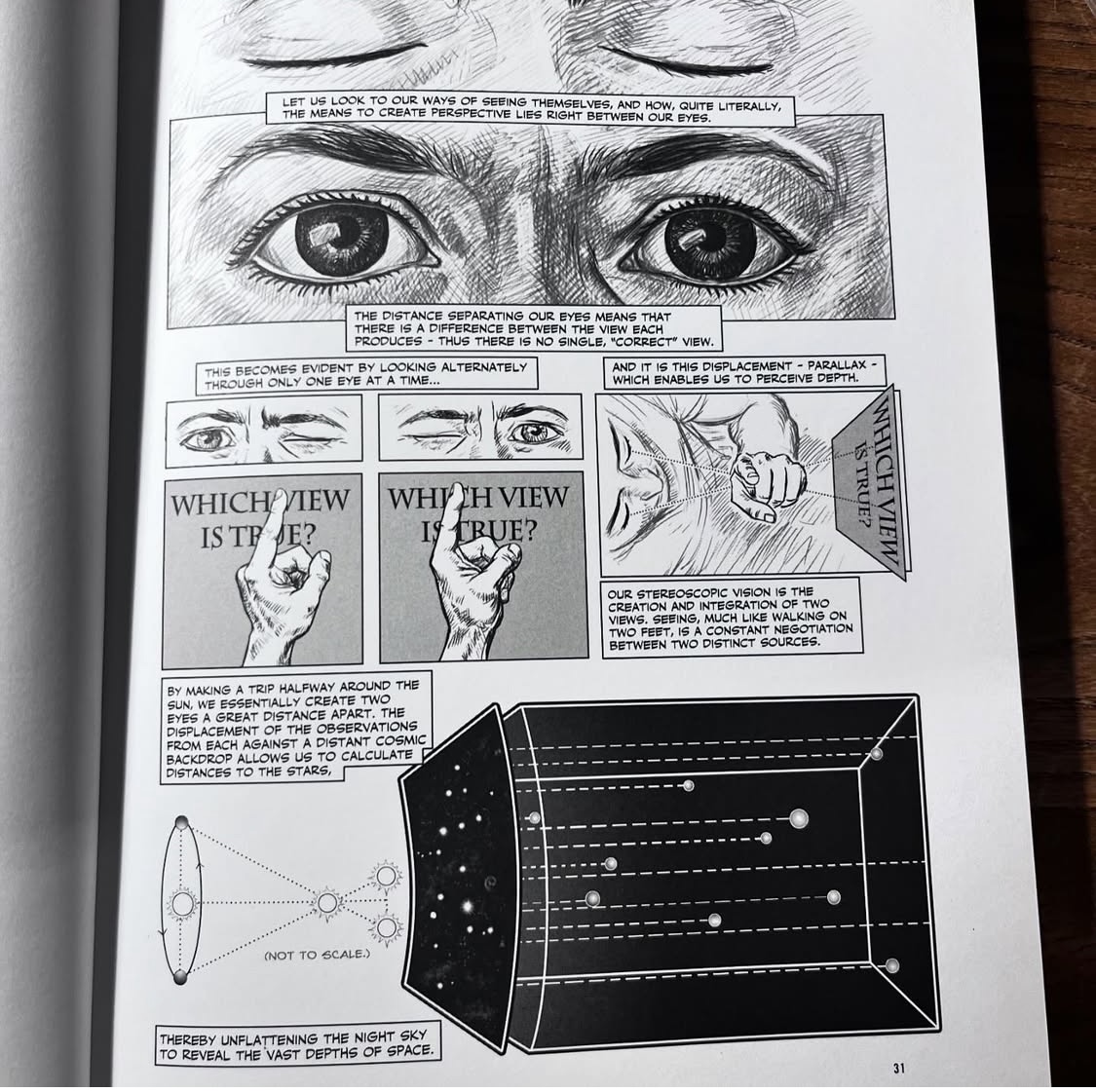

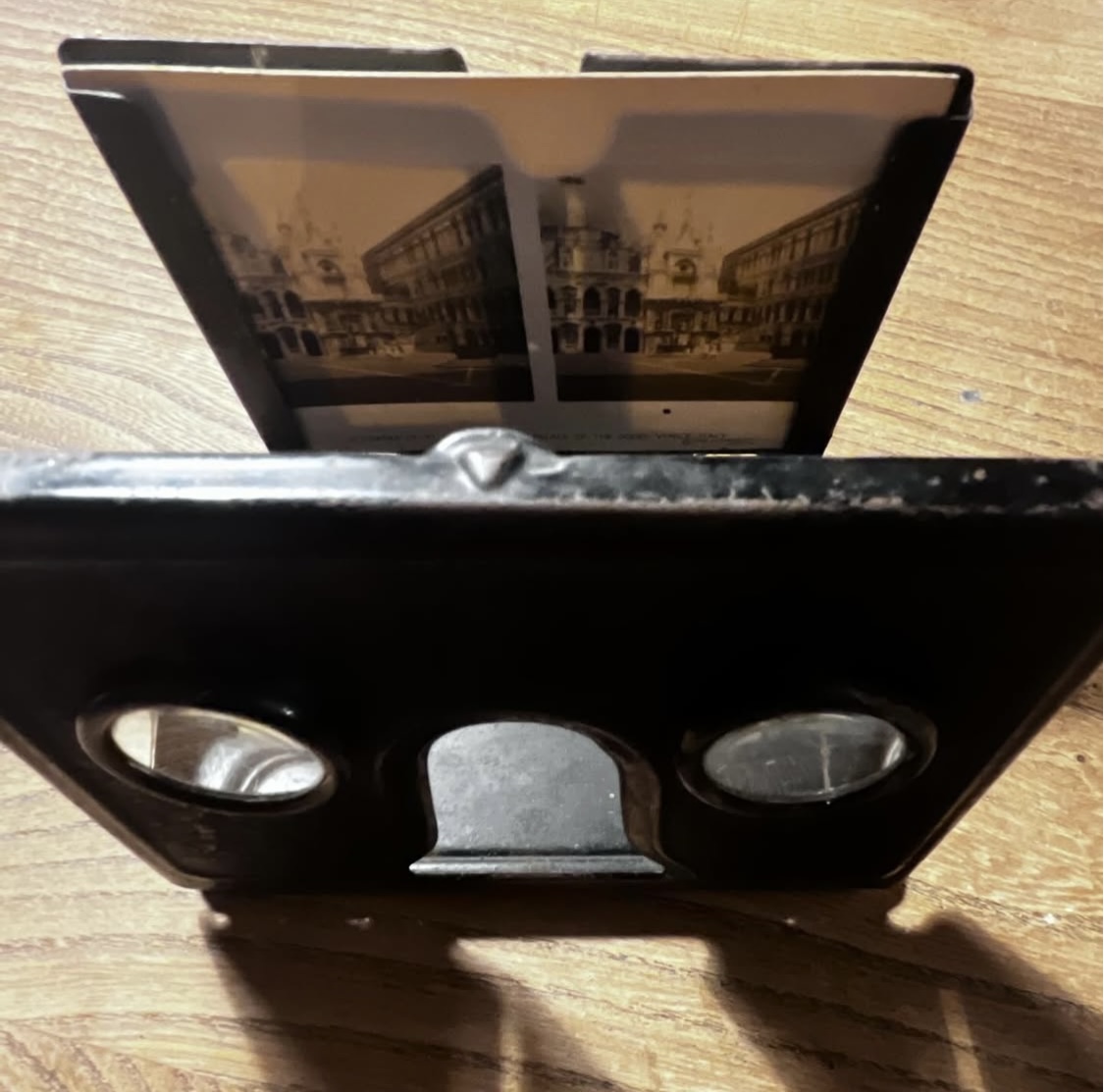
Alongside theory I taught practical sessions on experimental research methods. These have been documented in detail elsewhere on my website but included topics such as serendipity, sensory and performance ethnography, multimodality, cultural probes and more.



Situated Practice
Situated practice was a module that asked Experience Design students to collaborate with those on other MAs to work on live briefs. For this module I ran one live brief for each of the years that the MA ran.
The first was to use the co-design work produced by children for the Future Treescapes Videogame project to produced something that could be used within the game or its design.
Brandon Barnard in exploring the masks and narratives the children had created came up with the idea of turning them into comics that could then be hidden amongst trees in the videogame. He used paper prototyping to test the idea in the real world. In the final game this concept was used as in-game geocaching.

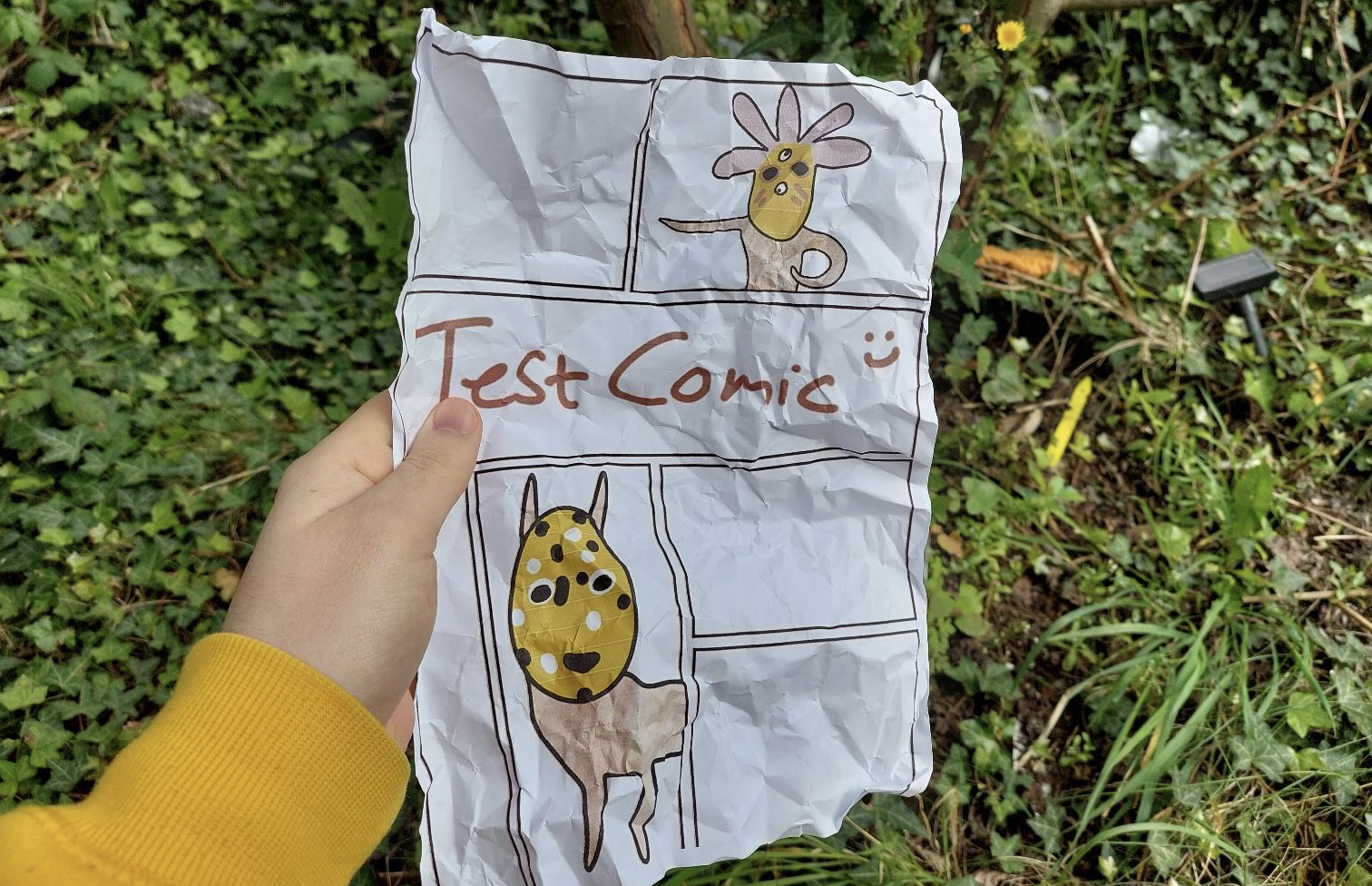
In the academic year 2024-25, I worked with three groups of students on a live brief that linked their work to the Devonport 200 festival at Plymouth’s Market Hall. Using a pre-existing children’s trail that Market Hall had commissioned from an illustrator to engage children and their families with local landmarks, I asked students to consider how they could bring their knowledge about interaction to make the trail engaging in additional ways.
Oliver Li, Razan Naser, Margit Curle-Halvorsen (MA Games Design) and Zeyu Xi (MA Games Design) combined to use location-based AR to trigger animation and poetry at some of the sites on the trail:

 Images: Work by Oliver Li, Razan Naser, Margit Curle-Halvorsen and Zeyu Xi
Images: Work by Oliver Li, Razan Naser, Margit Curle-Halvorsen and Zeyu Xi
Events/ Trips & Guest Speakers
In 2023 we took part in the Future Undokai Project. This was a collaboration between the Future Undokai Project in Japan, The Barbican Theatre and i-DAT at the University of Plymouth. The project explored the future of intergenerational community sports, and how communities might combine tech and physical materials to design new team games.






In 2024 we paired up with Hot Wire (Andy Prior) and White Noise (Ronnie Deelan) to host and take part in a night of experimental sound and images in the Immersive Vision Theatre:
I
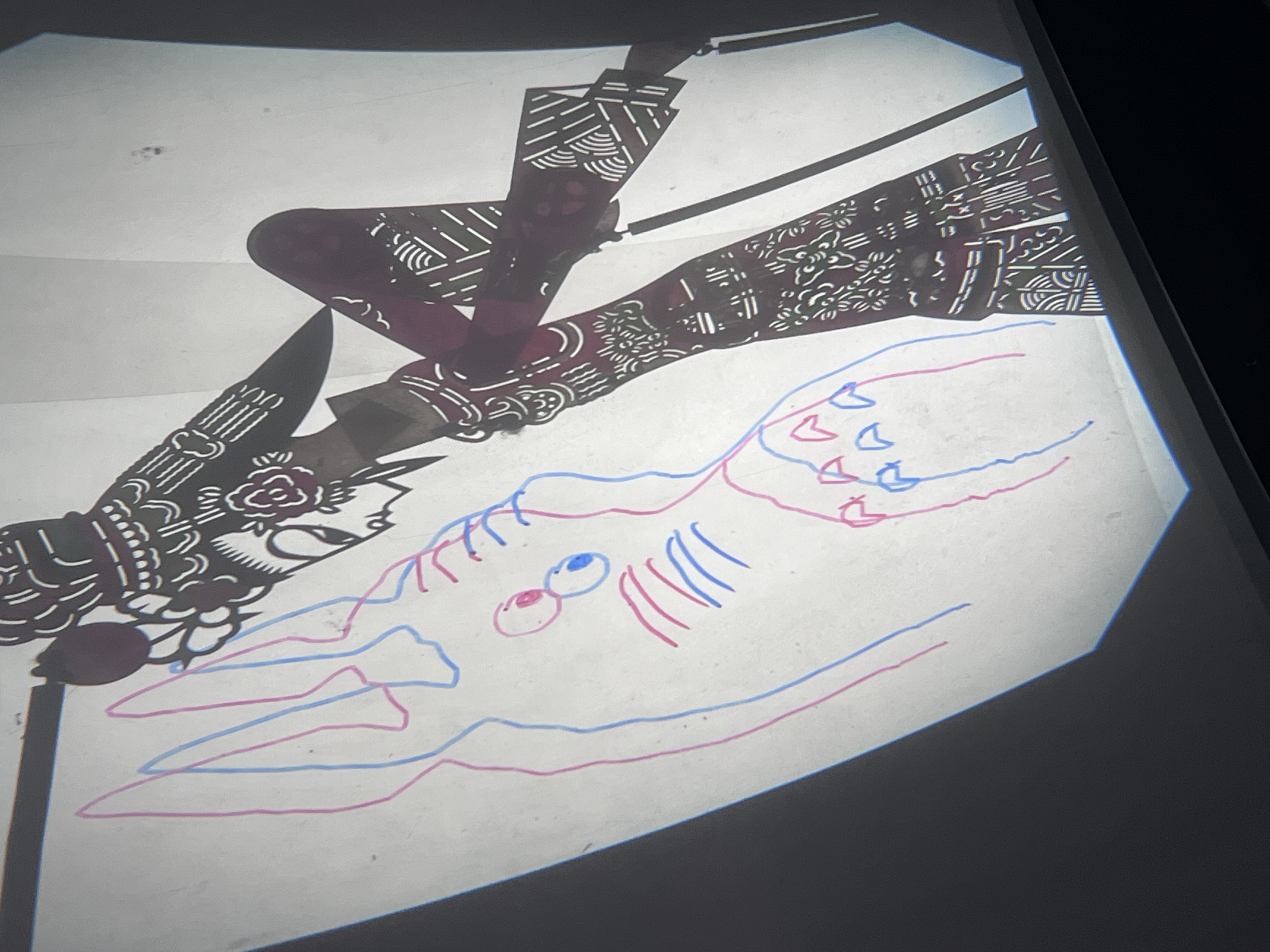

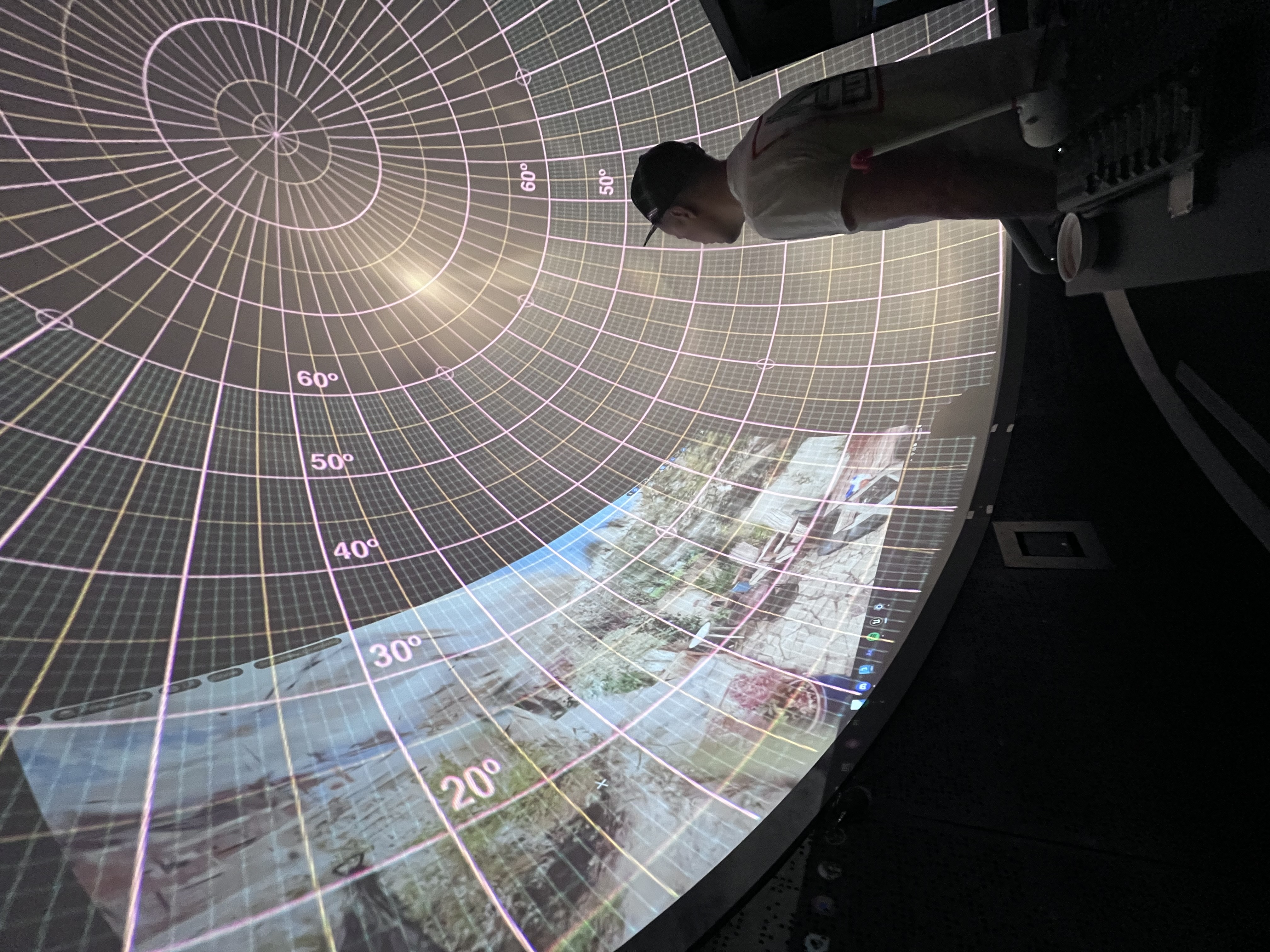

Images: MA Experience Design with Hotwire x White Noise
We also collaborated with and hosted the Holst Spaceship Earth event in the Immersive Vision Theatre, linking students to a live research project and the variety of artists involved in that:

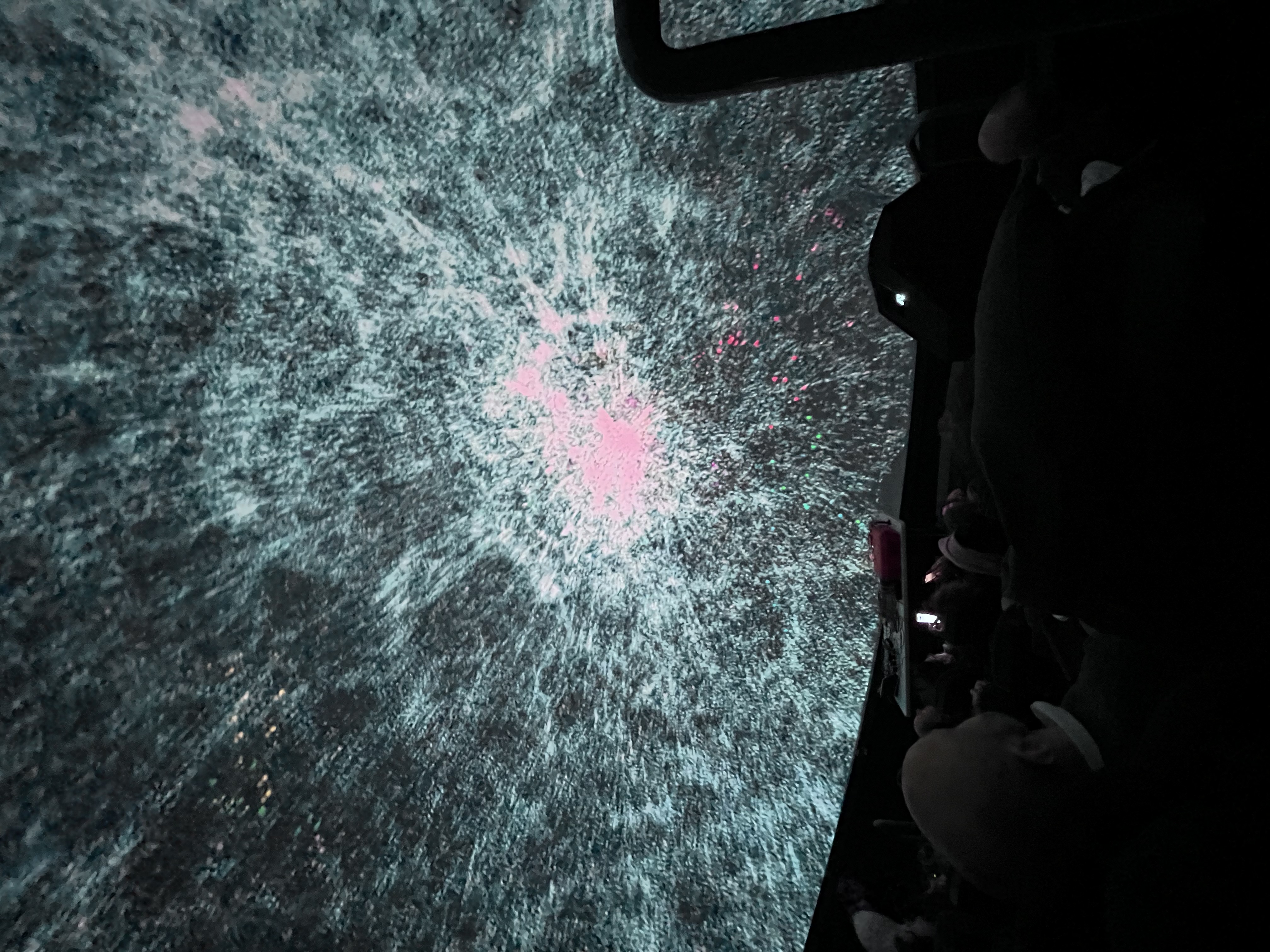


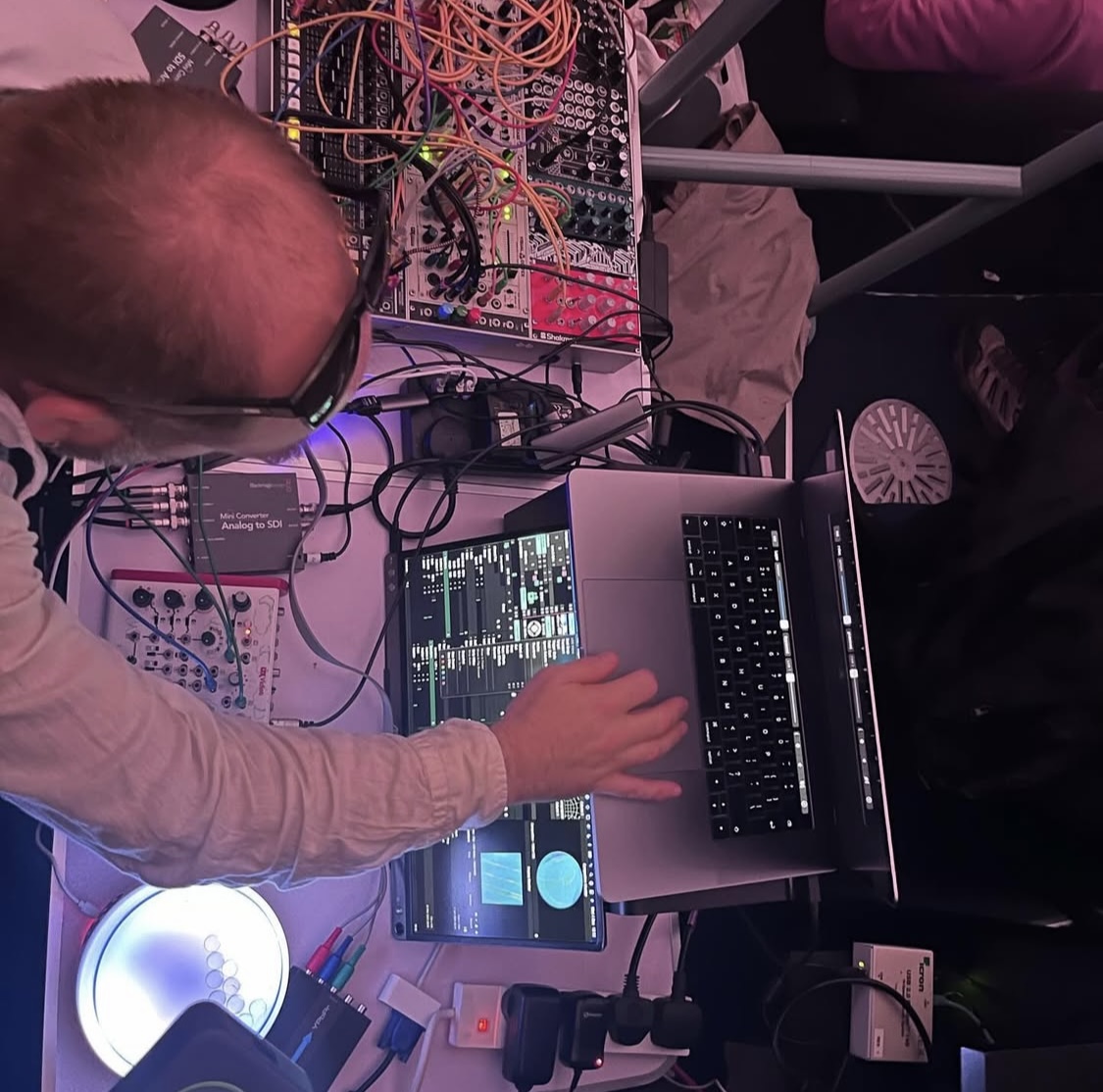
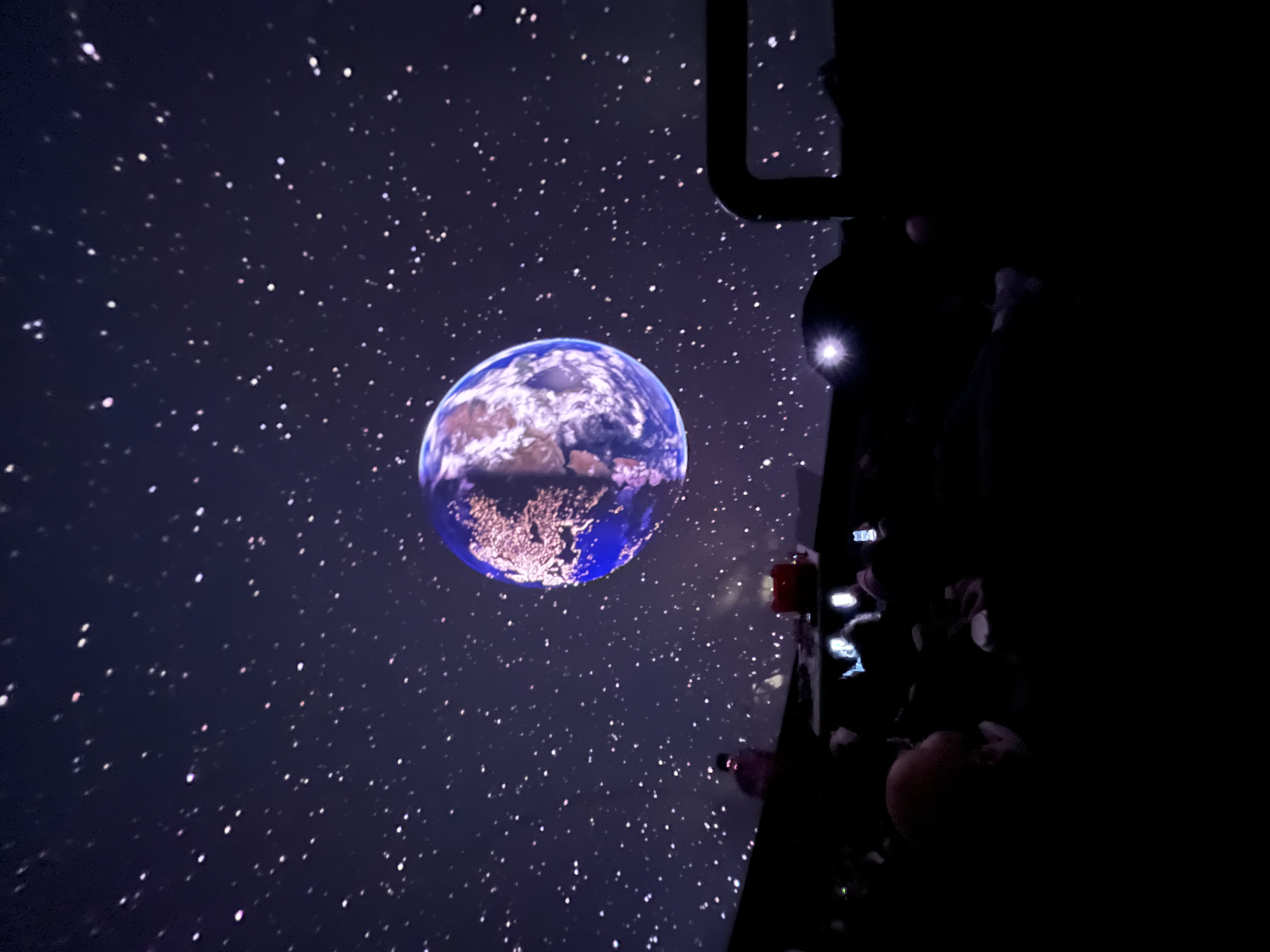


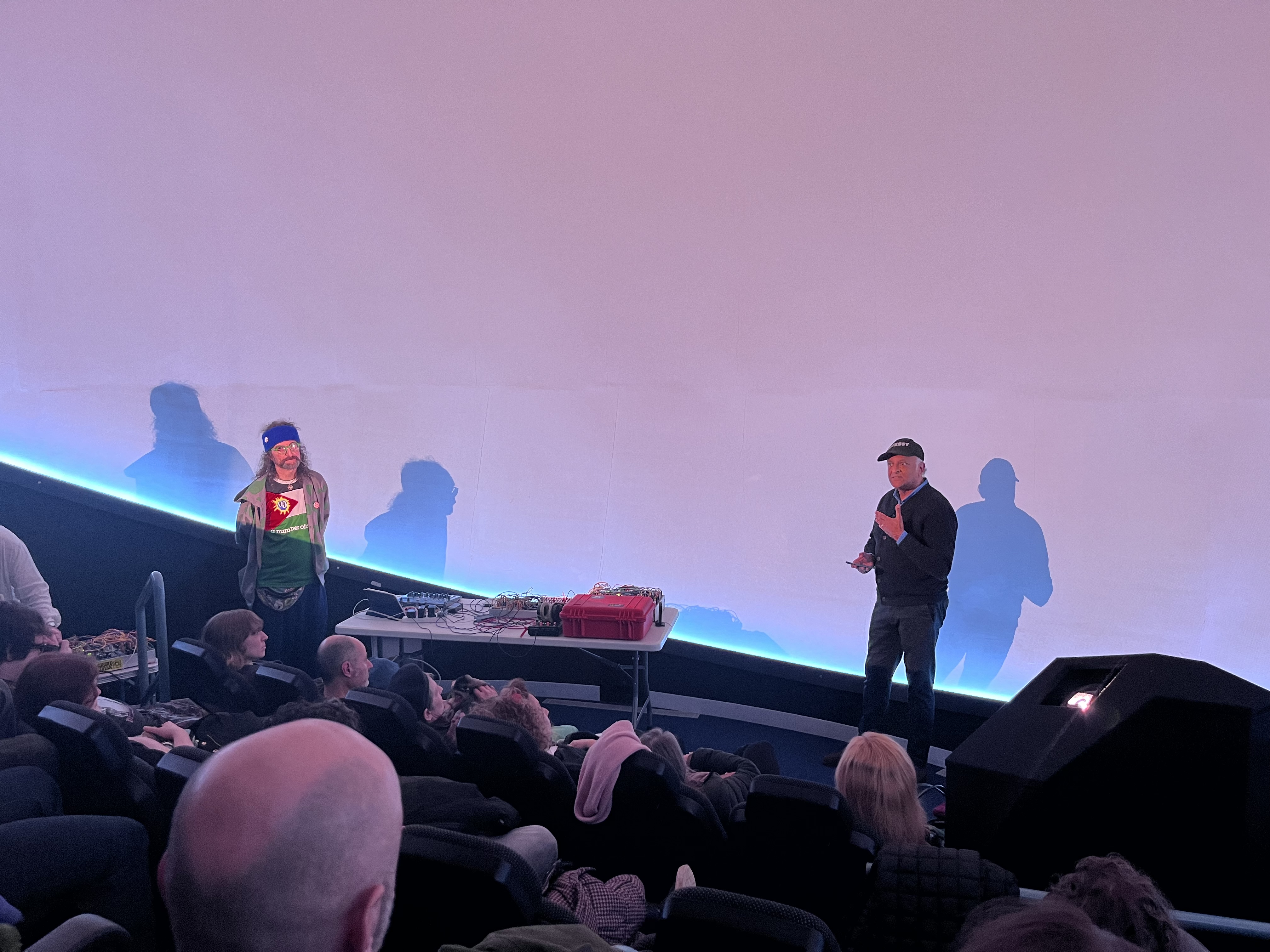
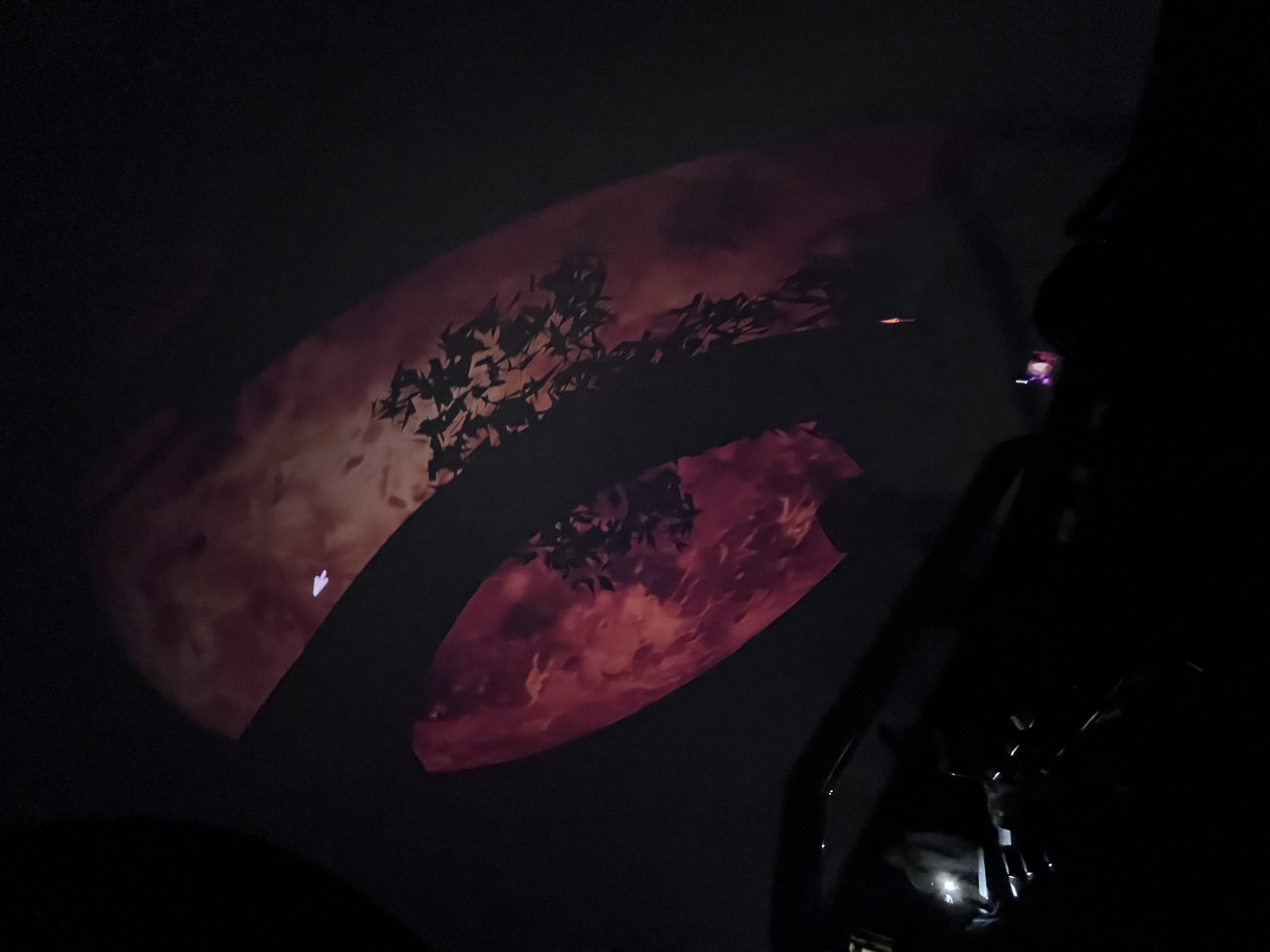
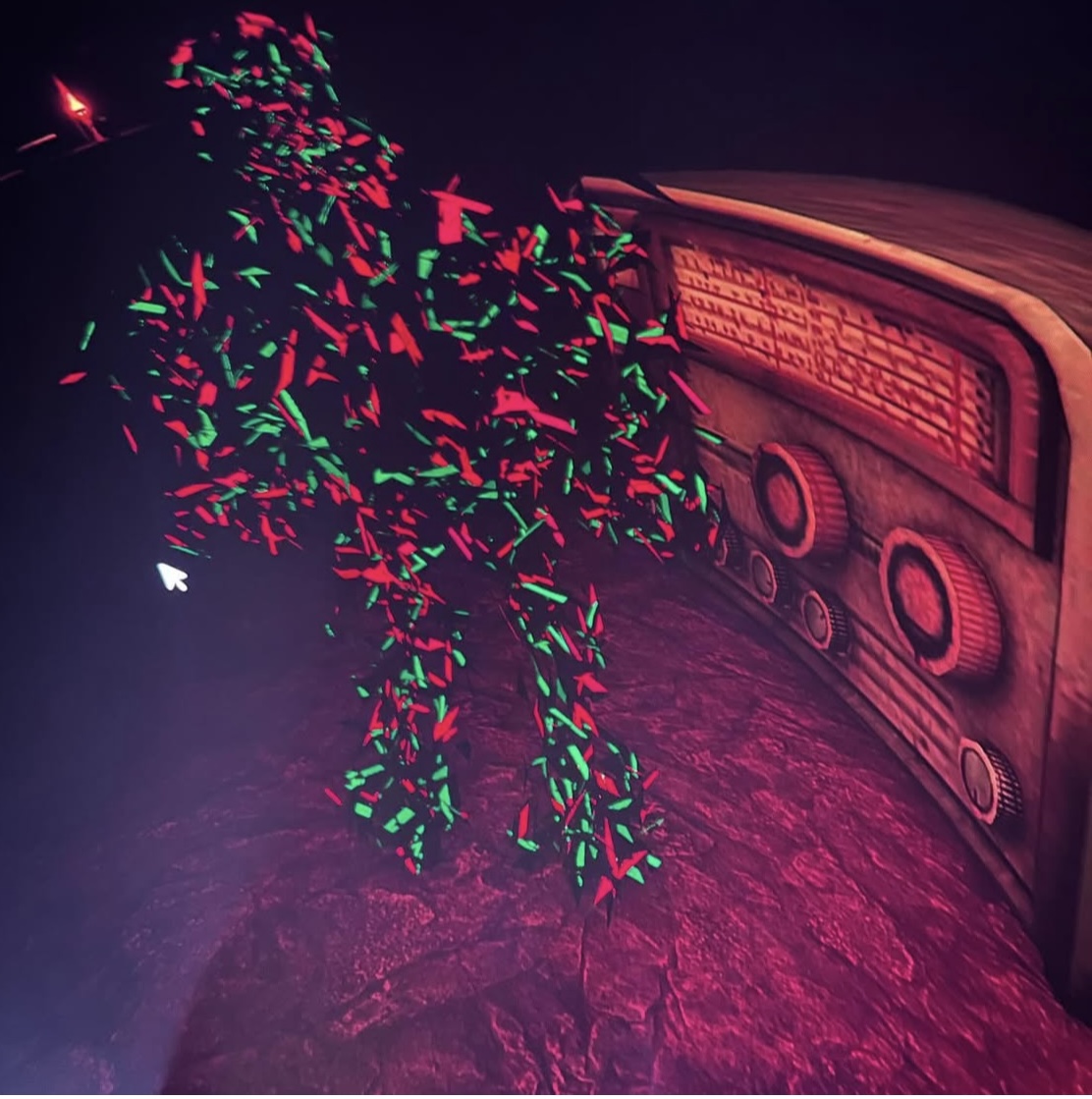

Ahead of the Transit of Earth event students took part in a Hotwire sound workshop lead by Andy Prior to produce rapid fire 360 sound design to be played as part of the event:



Additionally, throughout the course, we used the fulldome spaces in the Market Hall and the Immersive Vision Theatre to host scratch nights where students were free to experiment with work in progress:






Images: Fulldome scratch nights
We visited exhibitions at The Box, Mirror and Karst in Plymouth. As well as supported Brandon Bernard when he showed his work at Imperfect Cinema:


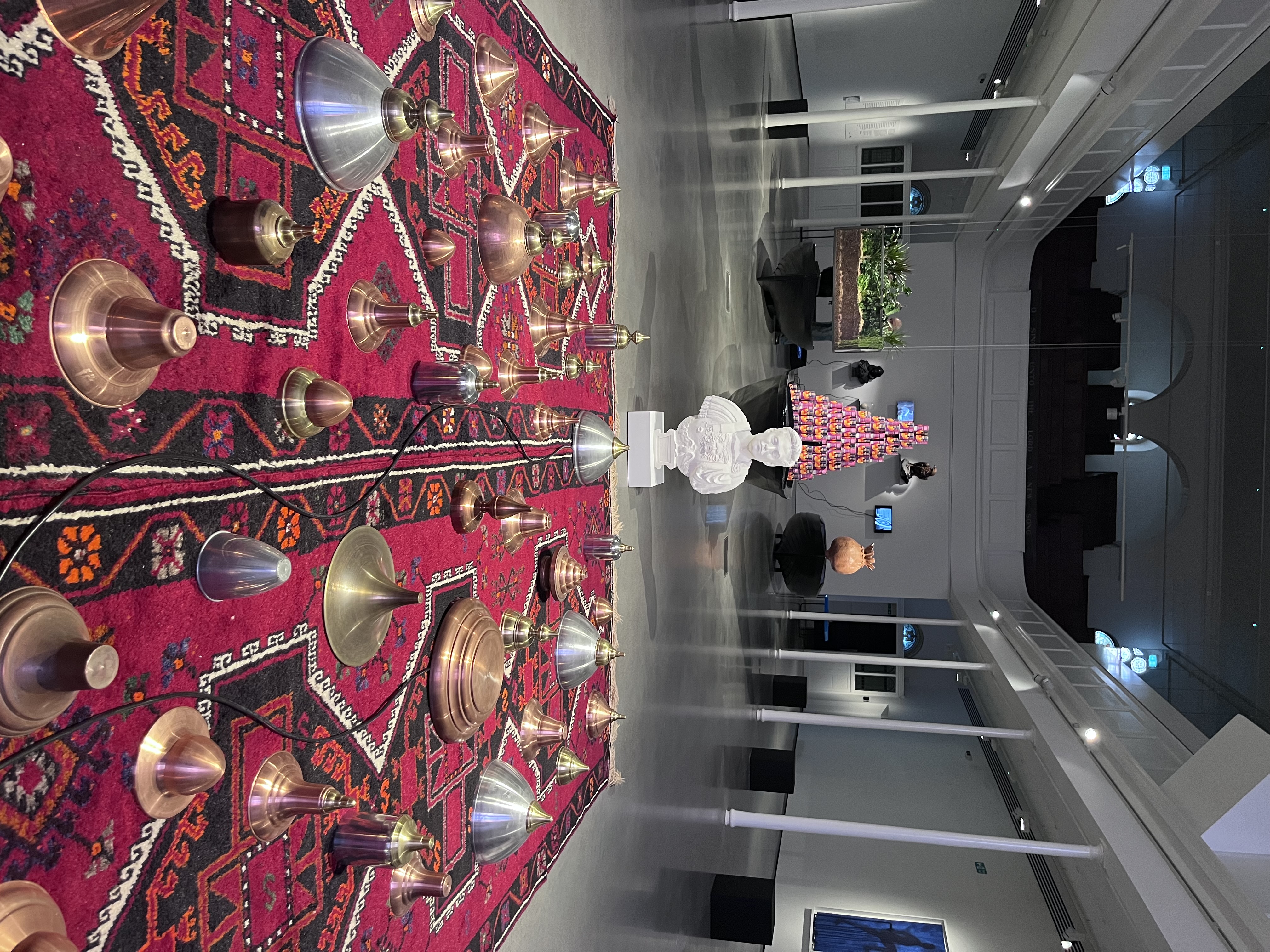

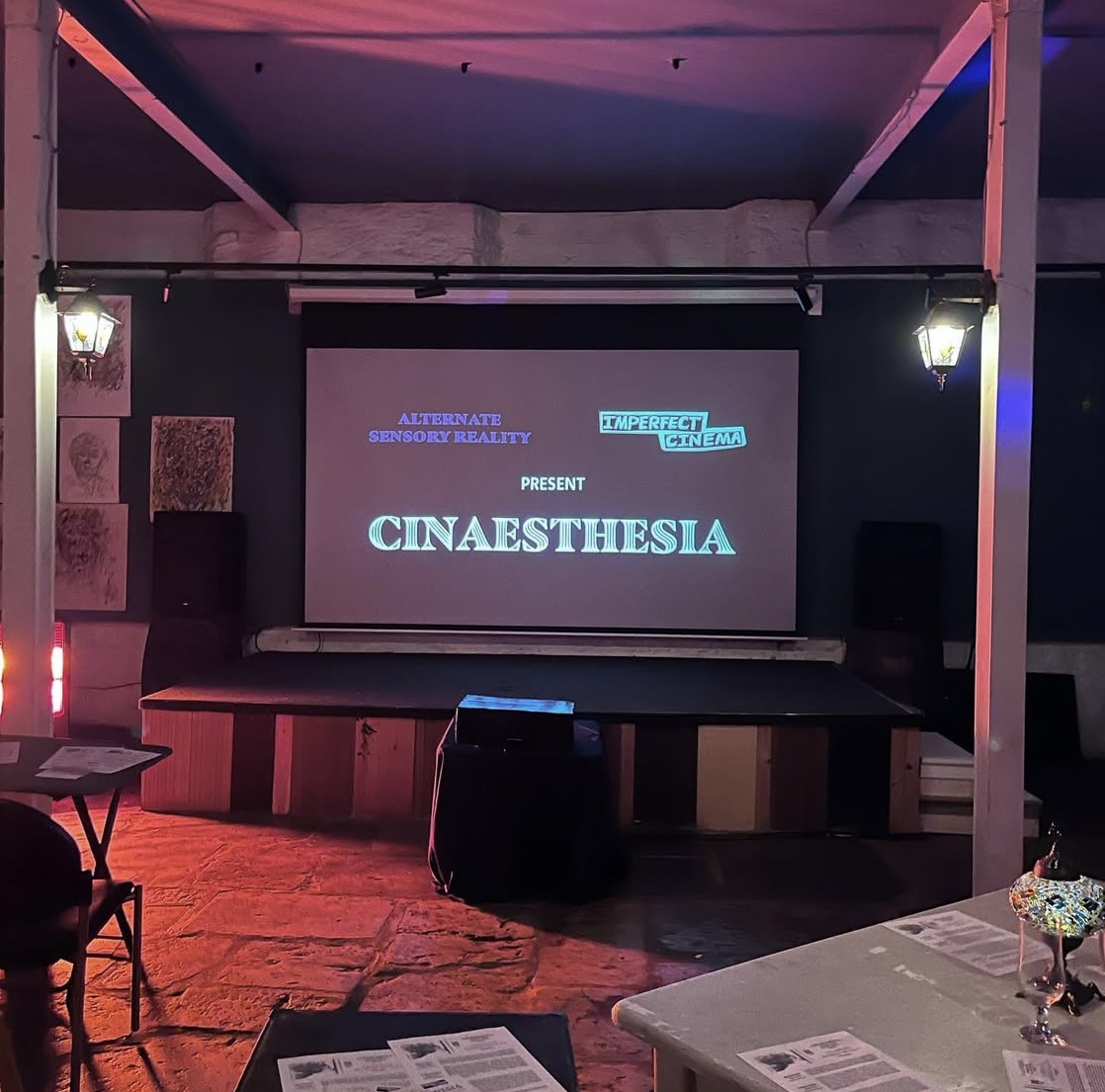
Plymouth Theatre Royal has two theatres and an experimental performance space and we attended shows to support studies into Experience Design. One of the shows Murmur also connected direct to one of the core readings related to more-than-human theories Sheldrake’s book on Fungi- Entangled Lives.




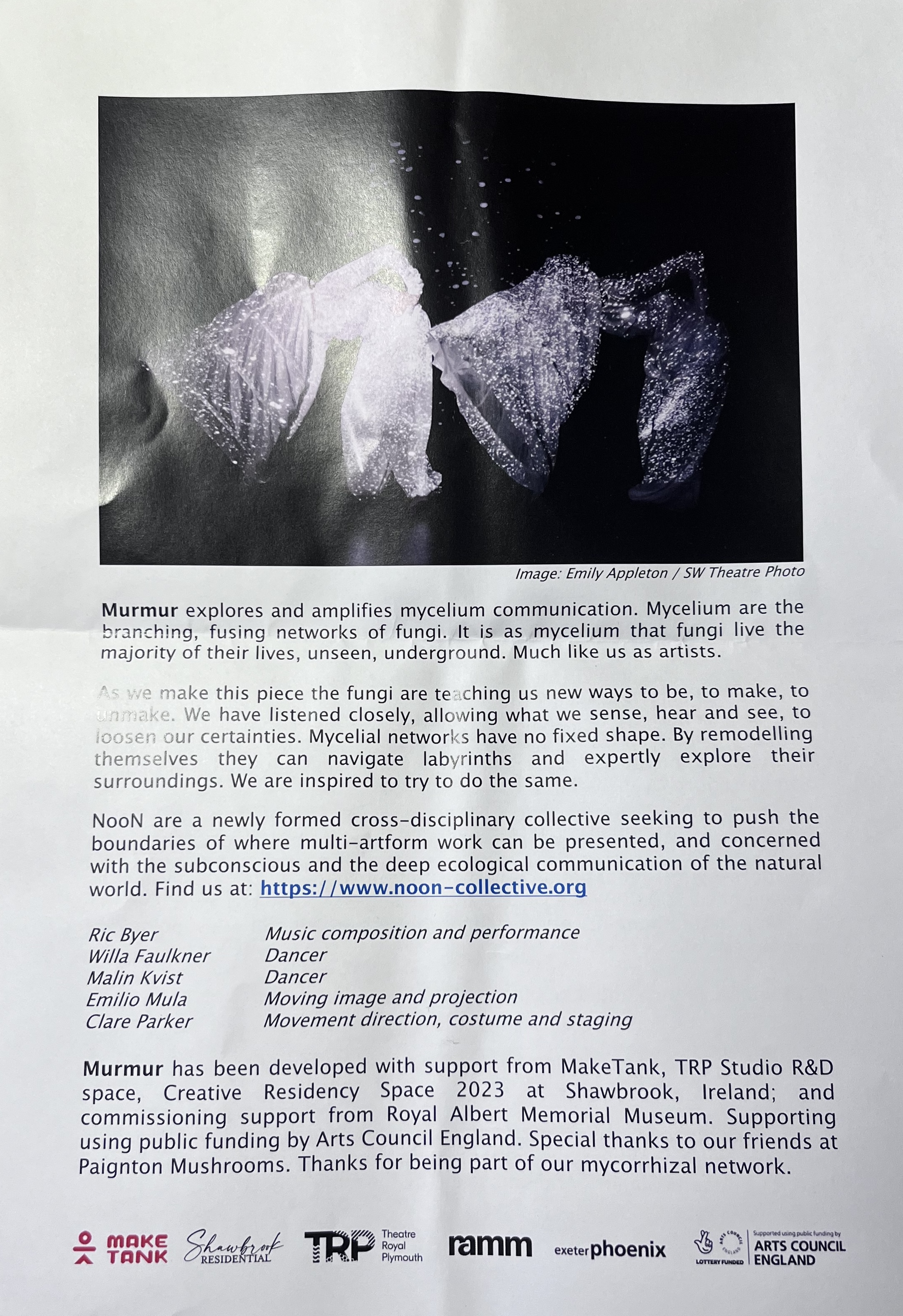
Student Work
Student Work: 2024-25
Watch Out!/ Xuefei Yang

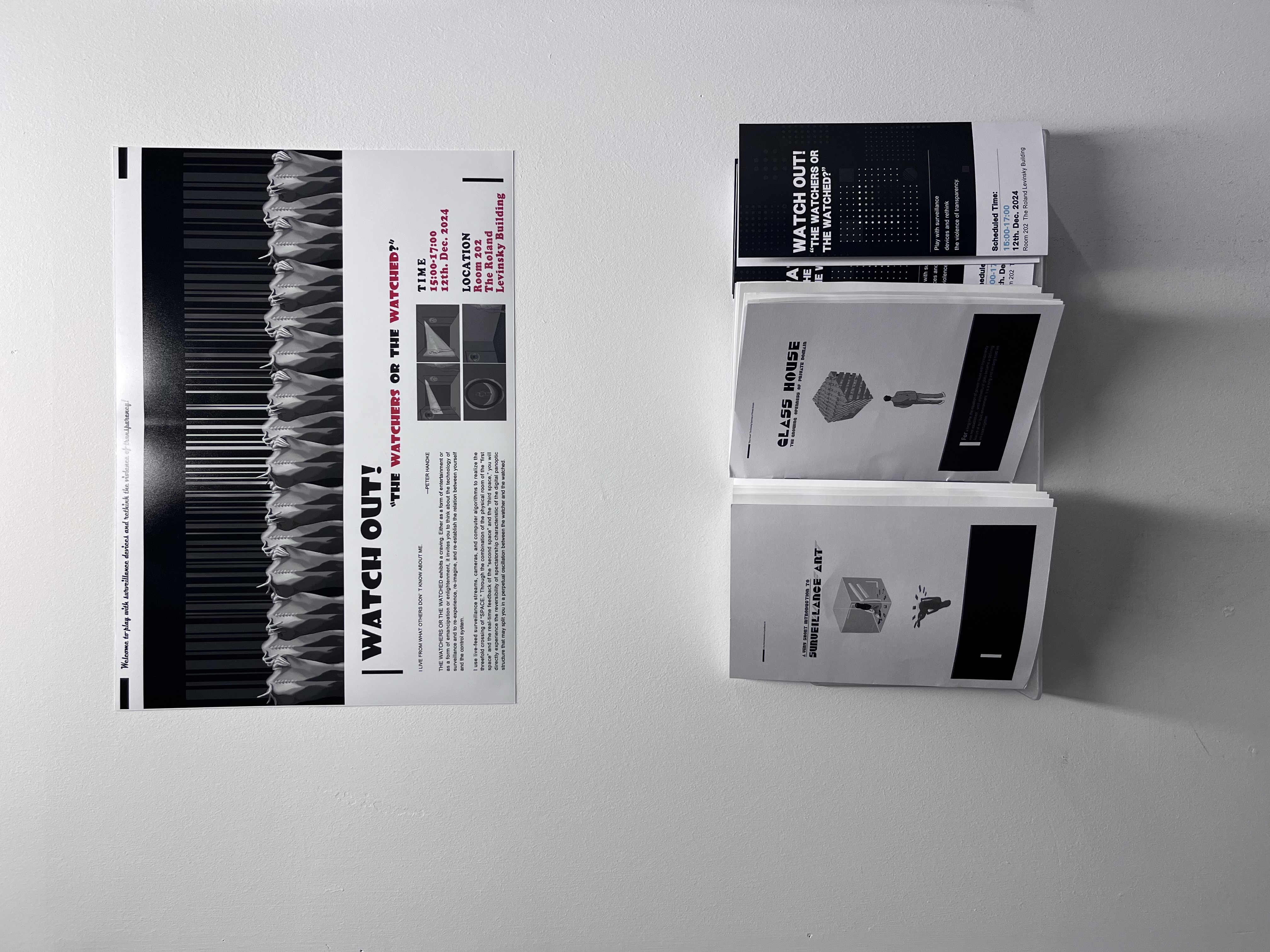
Field of Infinite Bloom/ Razan Naser
This project explored how XR can be used as the basis for allowing the audience to experience a feeling of hope and renewal within a multisensory installation. To do this, the work used projection, physical materials in the form of turf, sound and scent to bring together a narrative about flowers. It uses metaphors associated to stillness, stirring and bloom. As part of the design process she conducted both a survey to understand people’s favourite flowers as well as what they associate with specific flowers. Razan also conducted an arts-based workshop to learn more about these things by encouraging participants to sculpt a flower from clay. The findings from these two pieces of research led to the development of the Sunflower motif in the final work. Also core to the final production was collaboration with Margit Curle-Halvorsen who wrote a poem that was incorporated into the sound design.

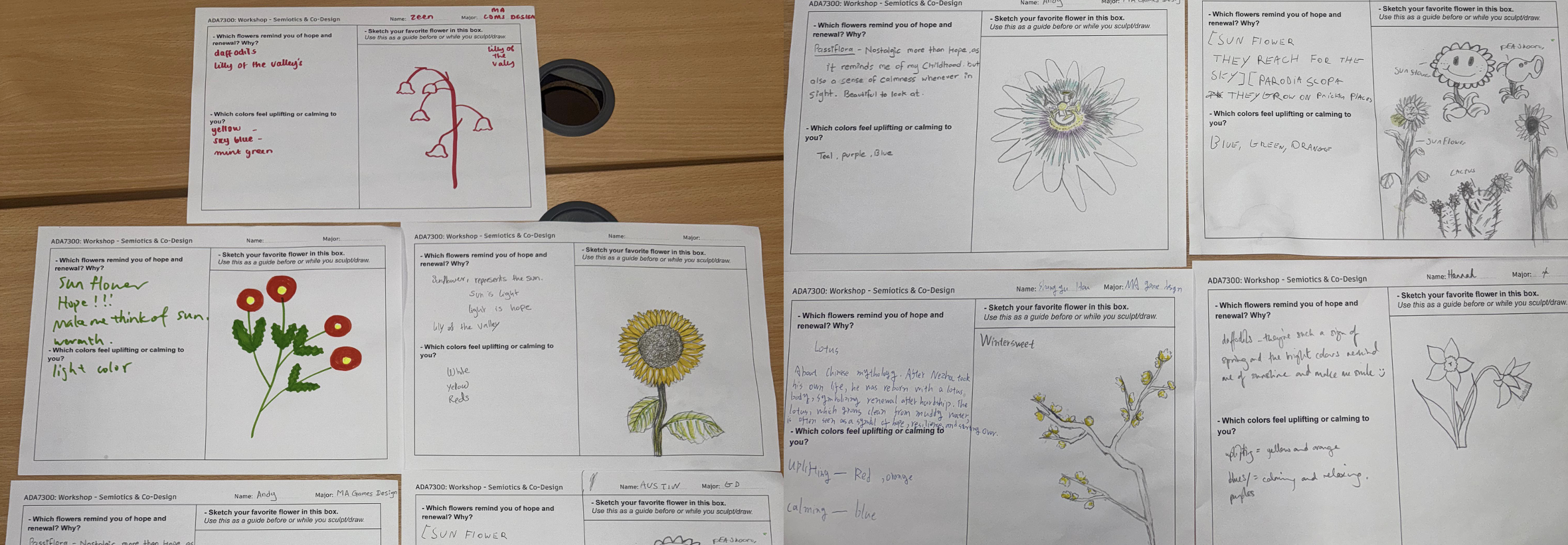
Image: Final installation ( Work by Razan Naser)
This project critically engaged with the notion of good action being associated with working hard and explored the possibility of lives beyond a neoliberal economy. This manifested as an interactive installation in which the audience uses the voice command of “stop” or “start” to control whether the mannequin works their repetitive job of removing liquid or not. Yet, if the audience chooses to free the mannequin from their labour they will drown.


I Don’t Want to go to Work/ Oliver Li
Across Design Lab 2 and final project Oliver focused on the topic of paper. Initially the piece was a client project focused on making something to help advertise the Illustration and the Paper Artefact conference at the University of Falmouth. However, as part of the work he began to explore people’s relationship to paper, analogue making as a rebuffal of AI and his own generations attitudes to work. The final piece became an animation made from paper called “I Don’t Want to go to Work”. In the final installation he chose to show the animation on a retro TV with artefacts related to his animated narrative resting on top.


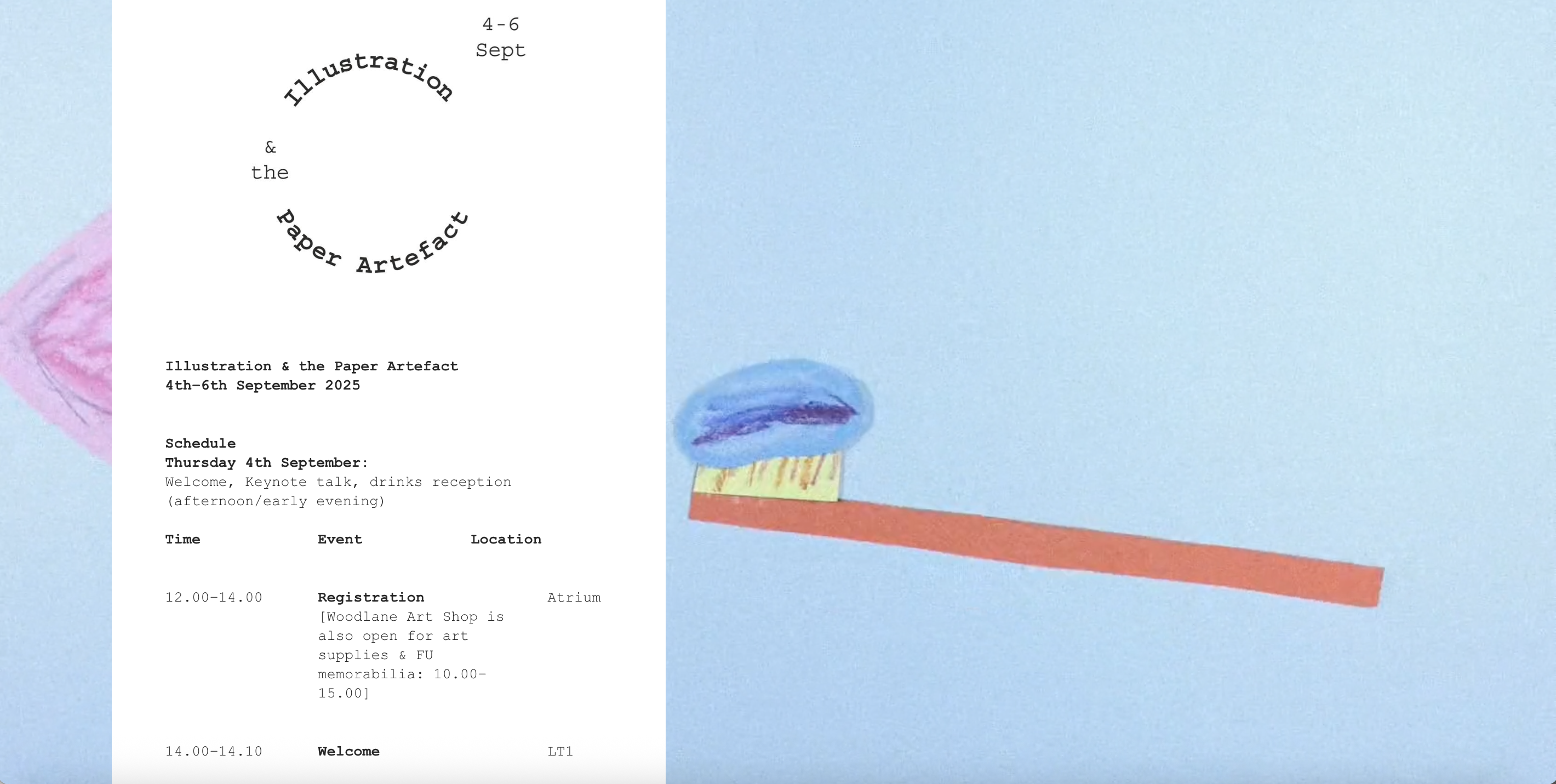
Images: Stills from the animation (top), animation as shown on the conference website (bottom) (all work by Oliver Li)
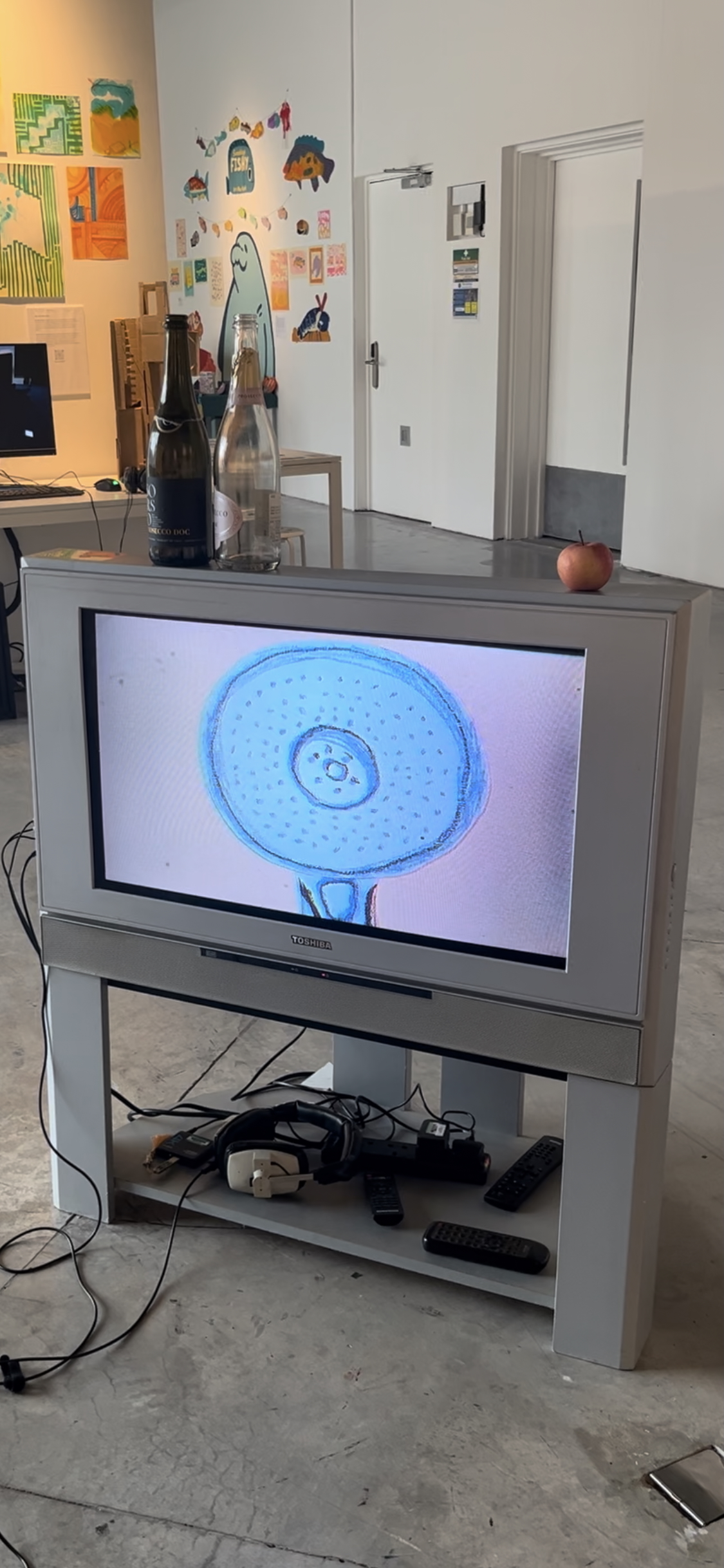
This in an interactive installation that aims to engage the user with notions of dark patterns embedded in digital platforms by making it impossible for the user to consent to the terms and conditions. It is accompanied by a series of cards that explain some of the dark patterns found in a range of popular digital platforms.
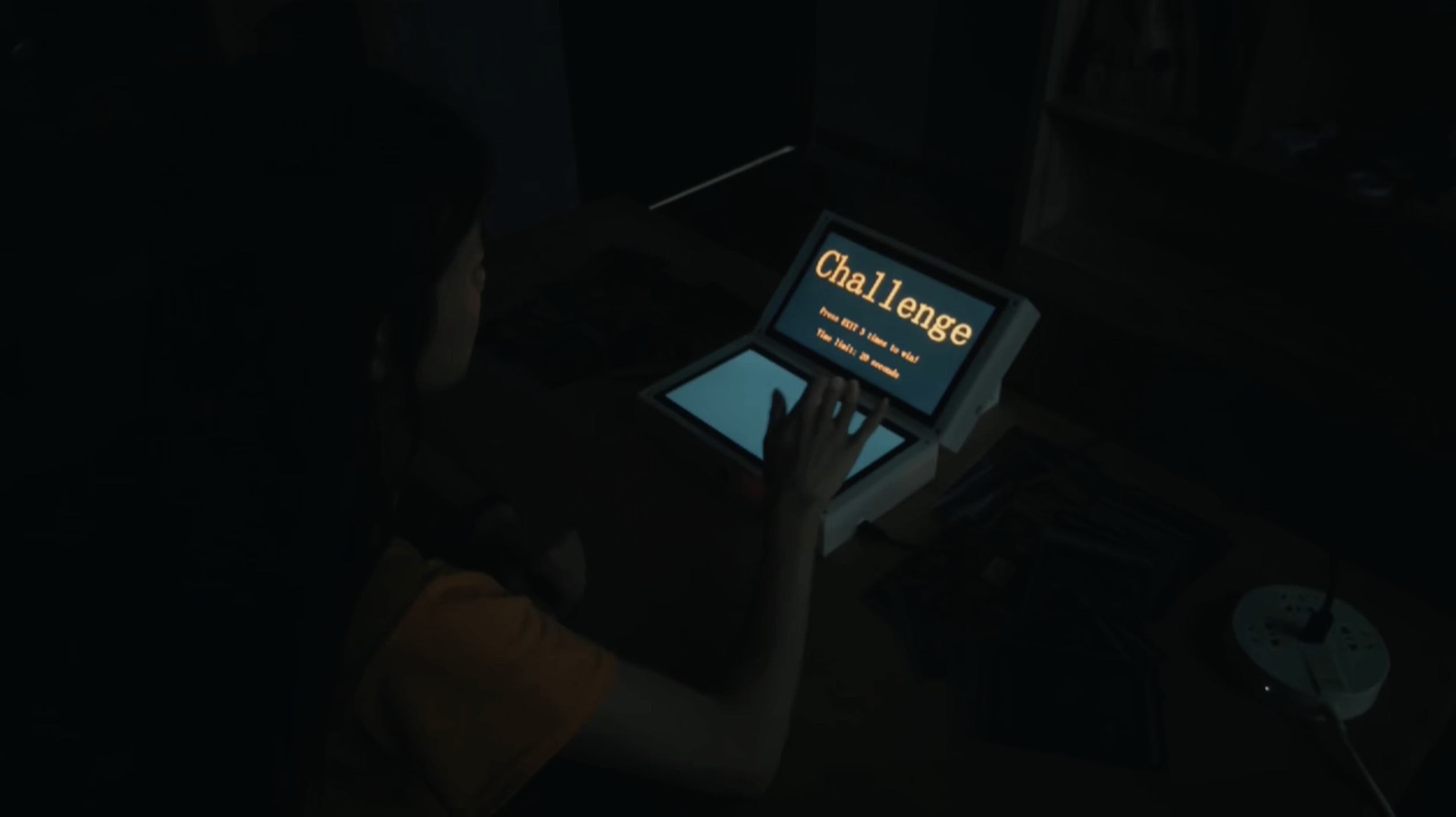 Image: Work and image by Xuefei Yang
Image: Work and image by Xuefei Yang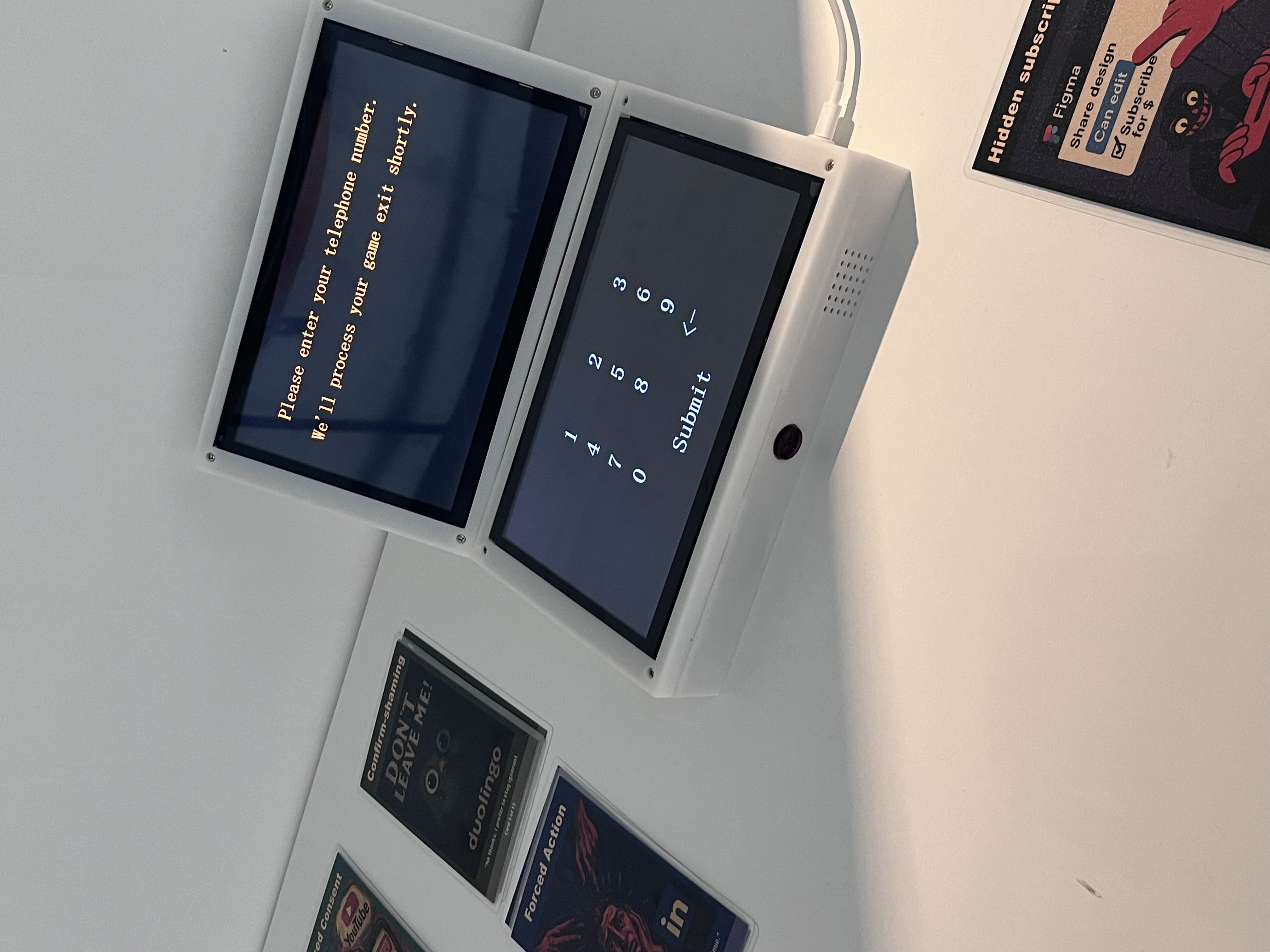
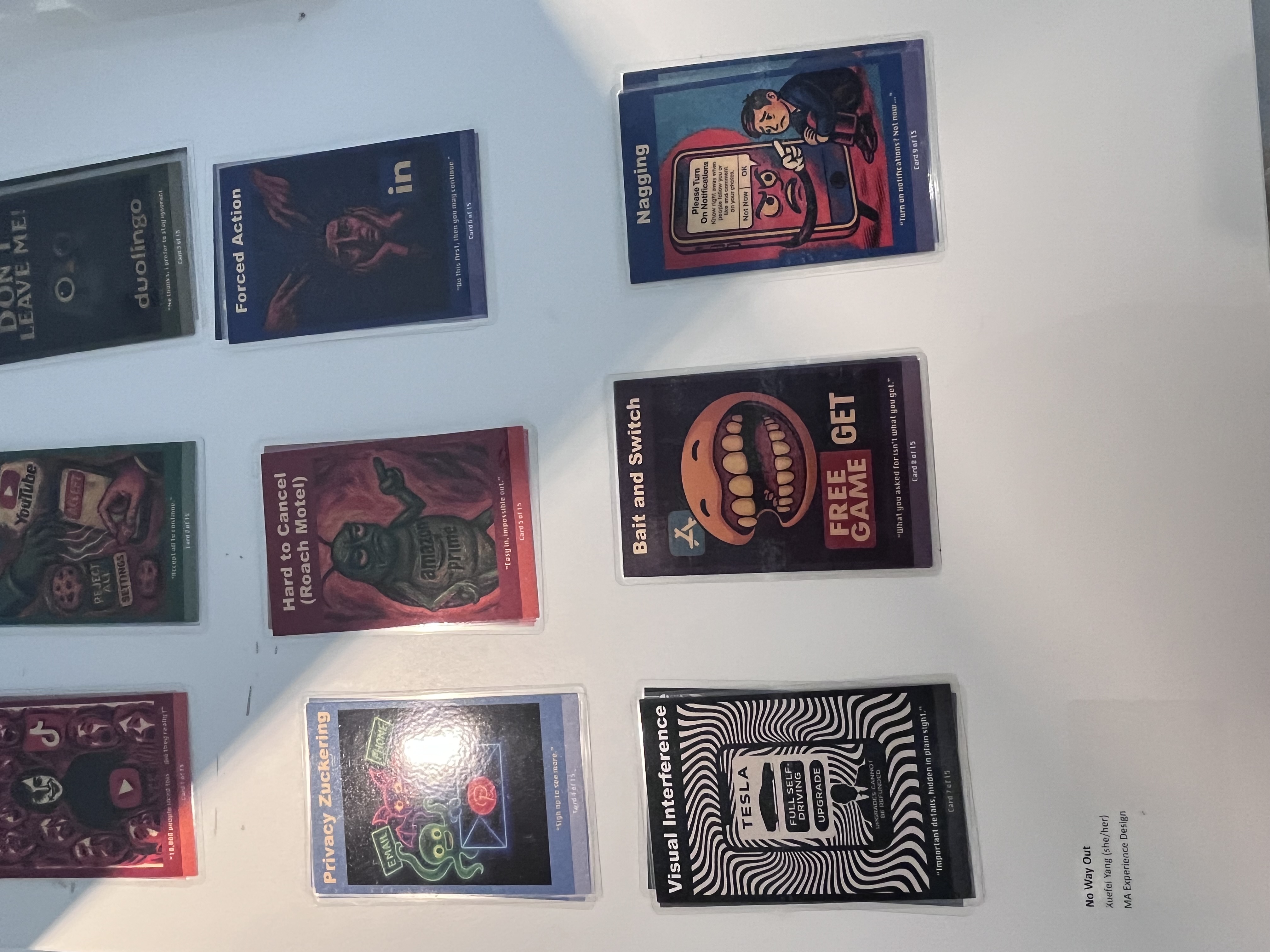
“No way Out is a critical interactive installation that exposes the hidden coercions of digital platforms through embodied experience. Building on dark pattern taxonomies and the epistemic tradition of play, it extends critical design into a performative mode of enquiry. The work stages behavioural extraction, datafication, and affective coercion not as abstract concepts but as lived encounters. Loops of frustration, hesitation, and deceptive closures make coercive logics perceptible only when enacted, turning critique into situated knowledge. In doing so, the project foregrounds the ethical stakes of interface design: How systems that appear functional can erode autonomy, obscure consent and normalise manipulation, while asking how design might instead real its politics and foster critical reflection.” (Words by Xuefei)
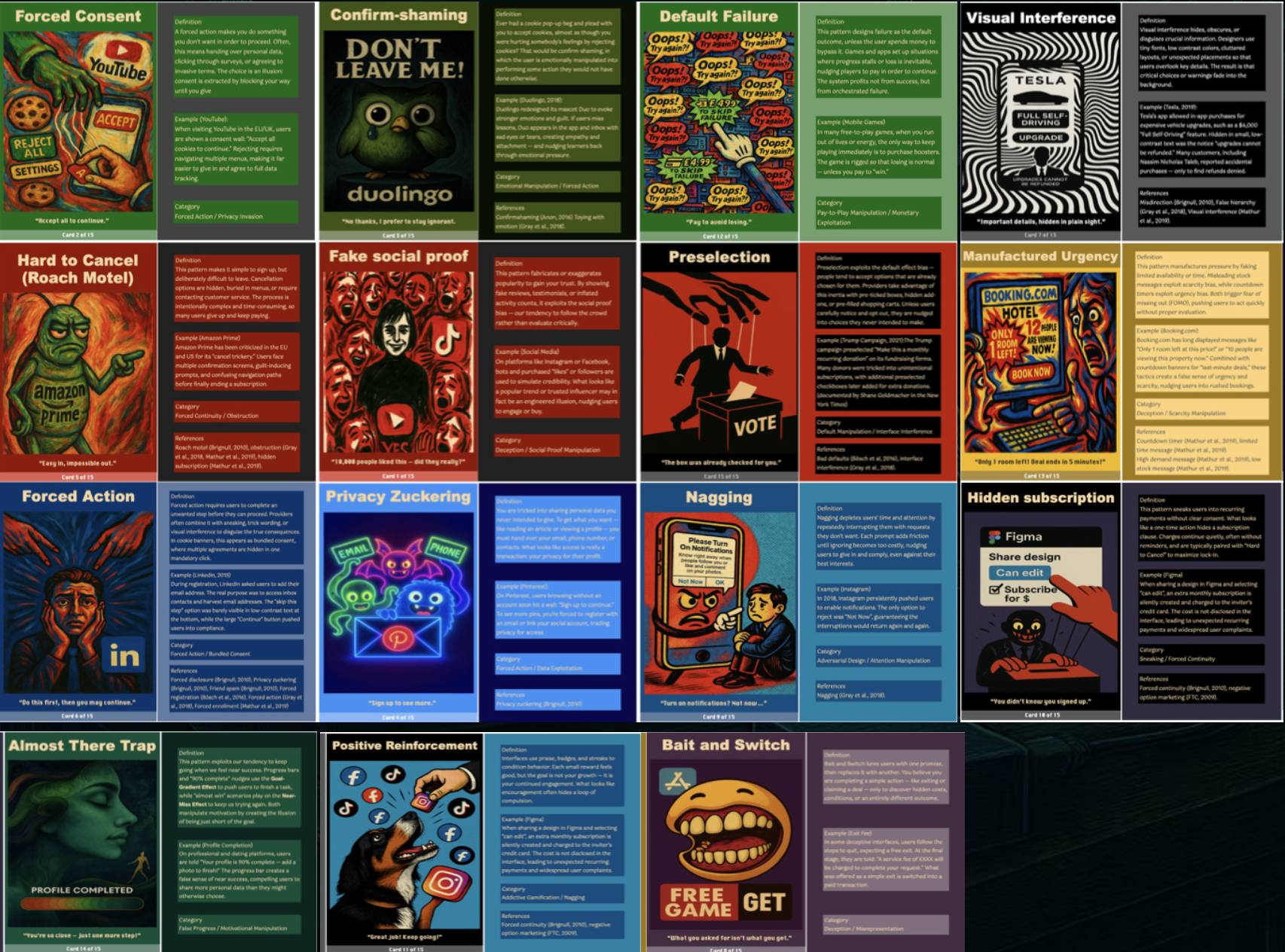 Image: Cards by Xuefei Yang
Image: Cards by Xuefei YangMy Disappearance / Alfie Jack Bailey Lallem
Alfie created a world in a game engine to capture the simultaneous isolating and self-soothing experience of complete dissociation from the world- the particular kind of escapism, he says, his brain likes to create during moments of extreme mental or sensory input. The work refers to the feeling of leaving behind his surroundings in favour of an abstract internal illusion of stillness.
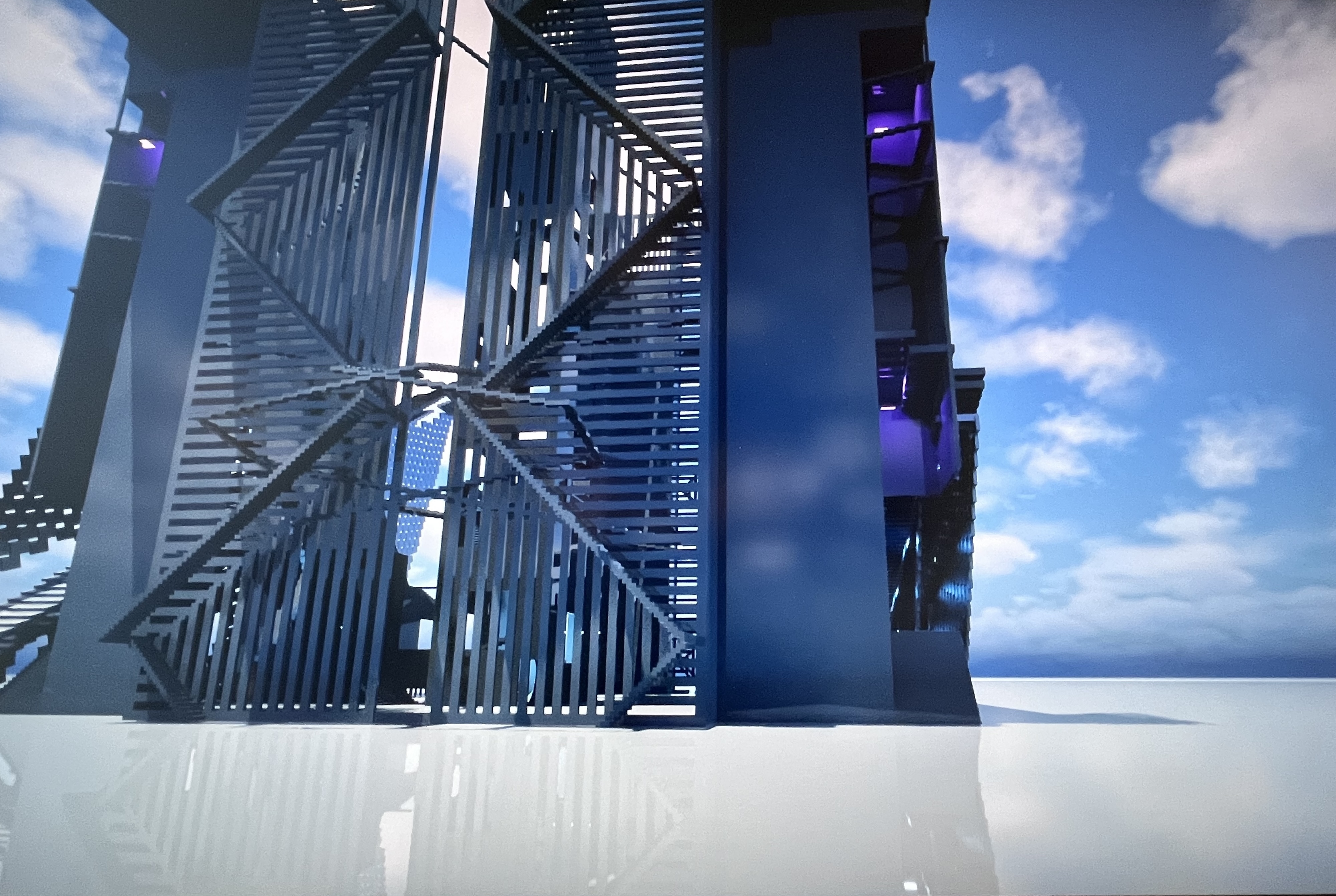 Image: “My Dissapperence” by Alfie Jack Bailey Lallem
Image: “My Dissapperence” by Alfie Jack Bailey Lallem
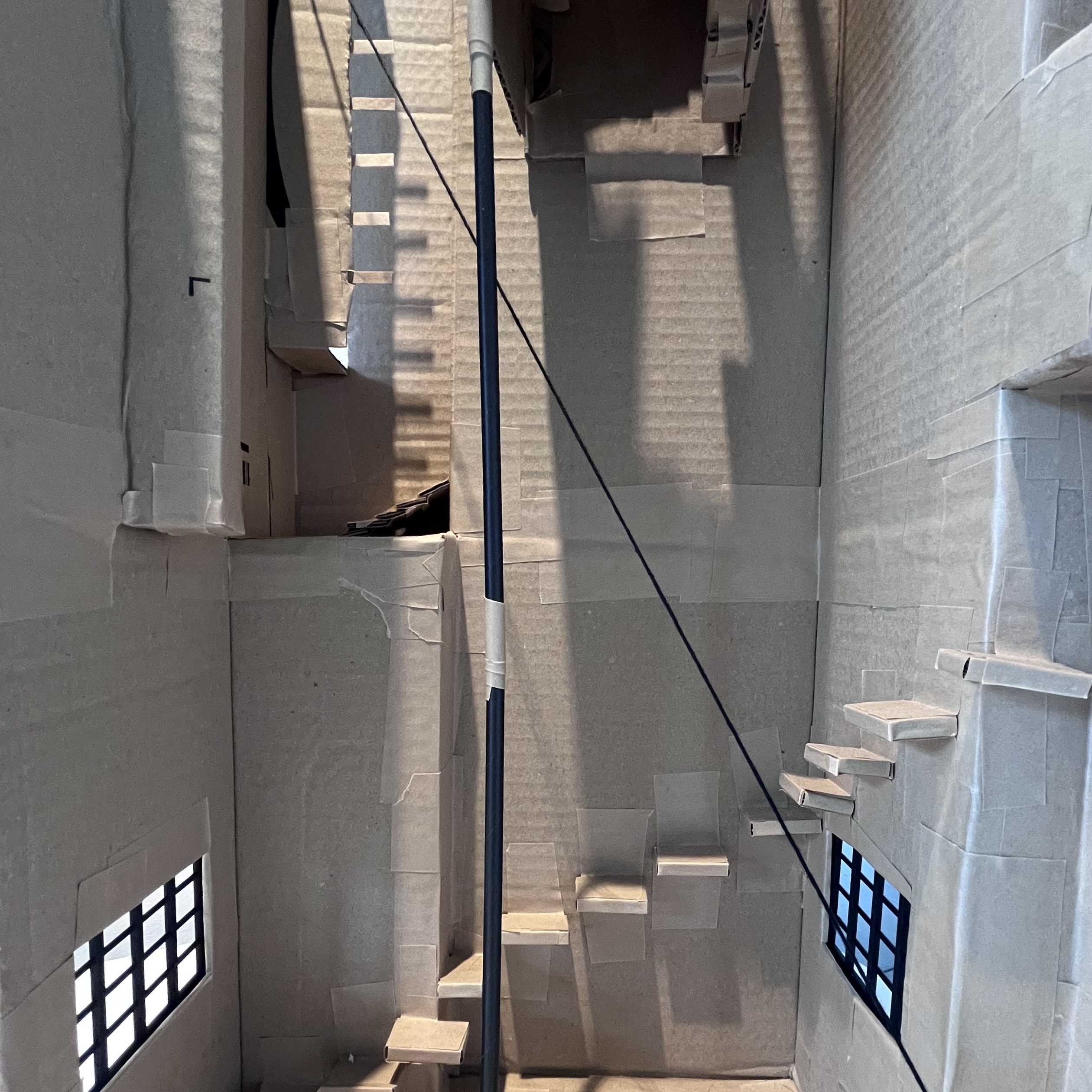

Immersive Echoes/ Razan Naser
For the second term of Design Lab Razan made a site-specific work for the Market Hall fulldome, Plymouth. The Market Hallis situated in a historic area of Plymouth and so she set about researching changes to the use of the historic building and area using archival material held by The Box museum and then used this to make a 360 mixed-media film as a response to what she describes as “a response to cultural memory loss through urban regeneration”. Leading into this she undertook 3D scanning, sketches, speculative storytelling, and an exploration of glitch aesthetics.
 Images: Field work at Market Hall (Images by Razan Naser)
Images: Field work at Market Hall (Images by Razan Naser)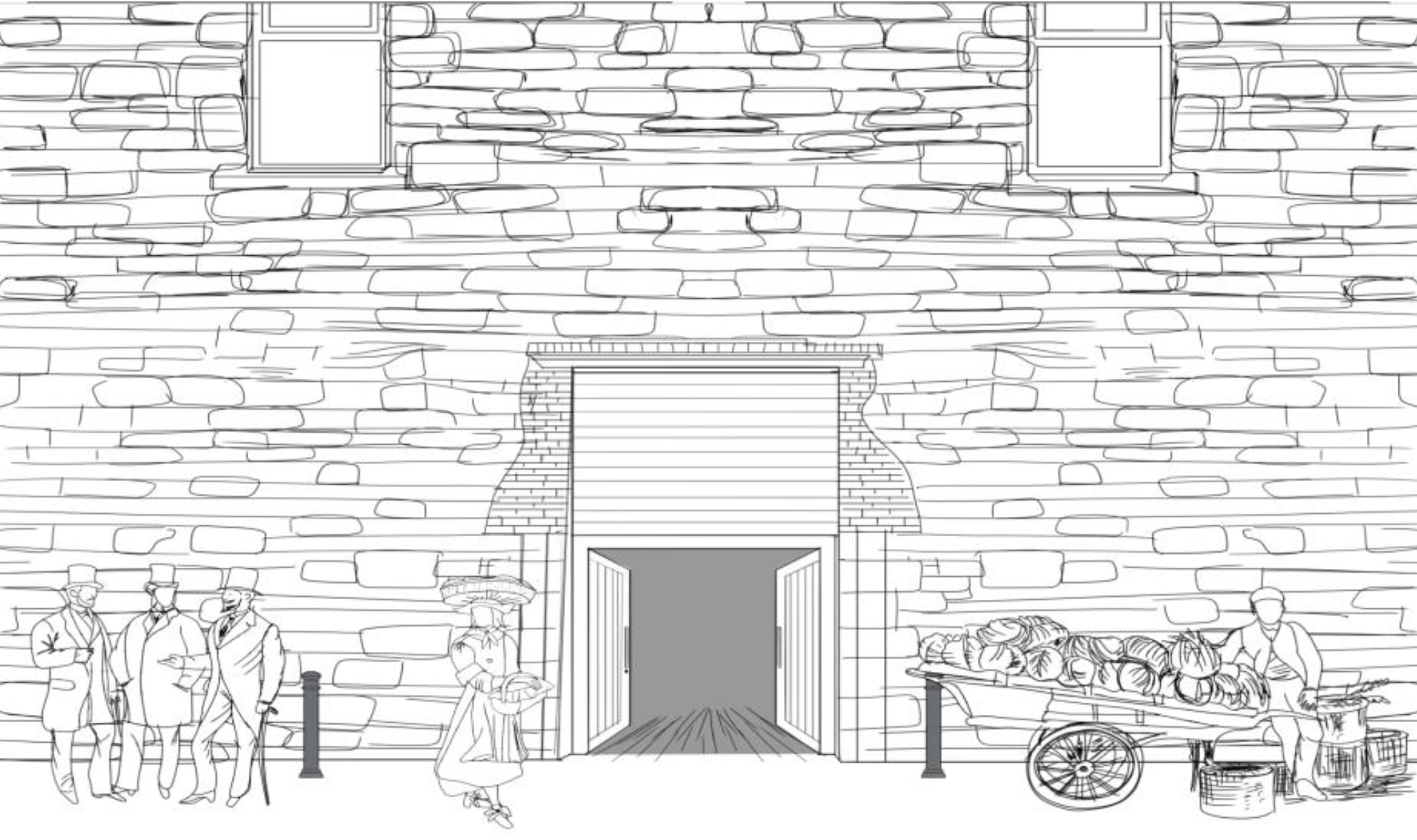


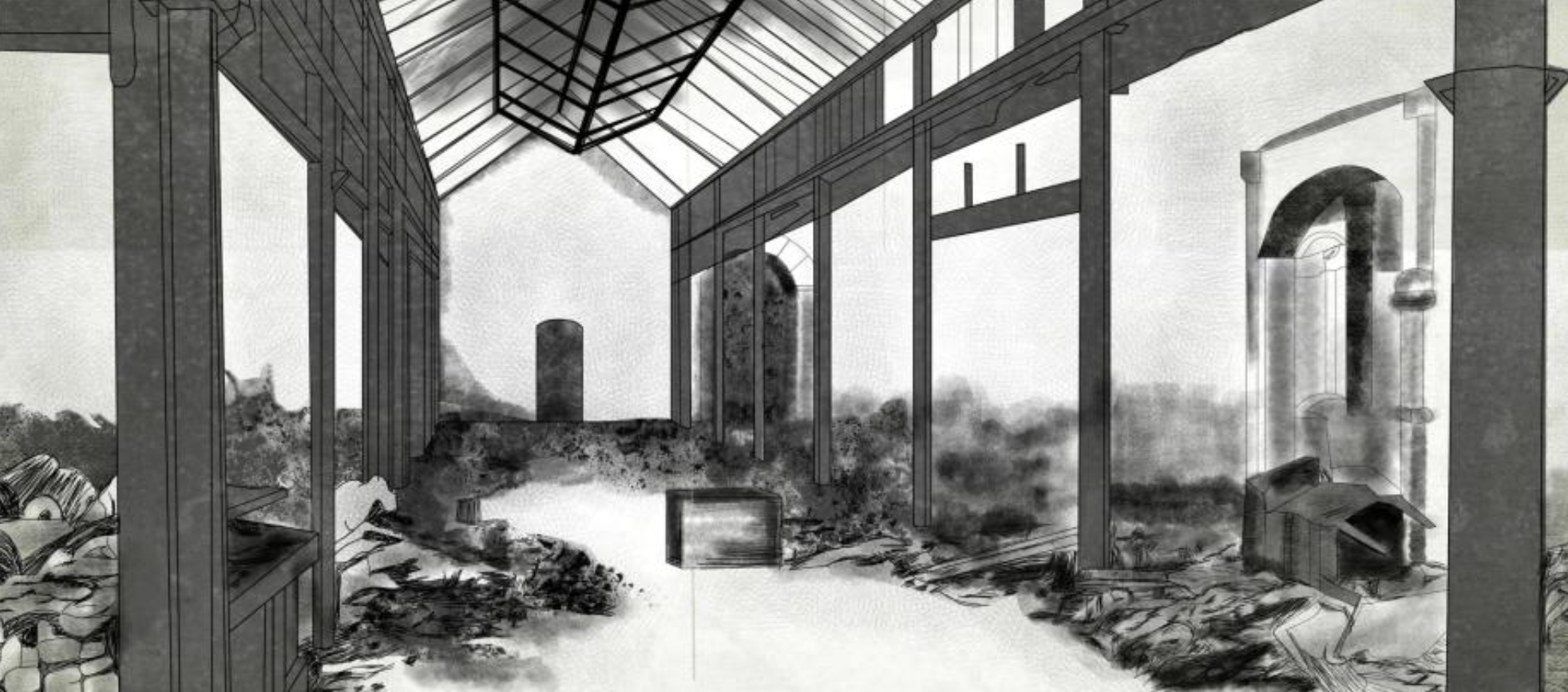
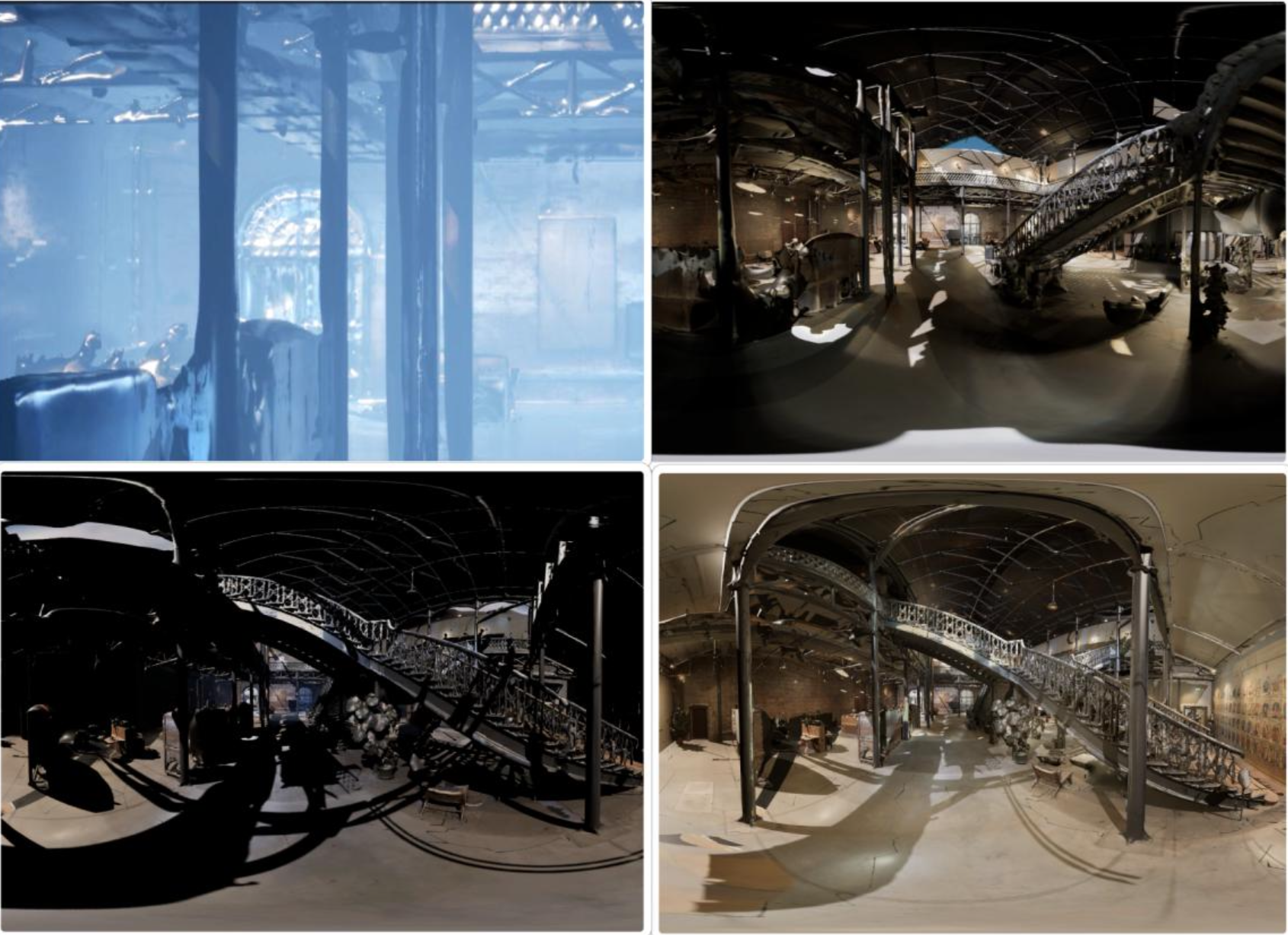 Images: Work in Progress(images by Razan Naser)
Images: Work in Progress(images by Razan Naser) 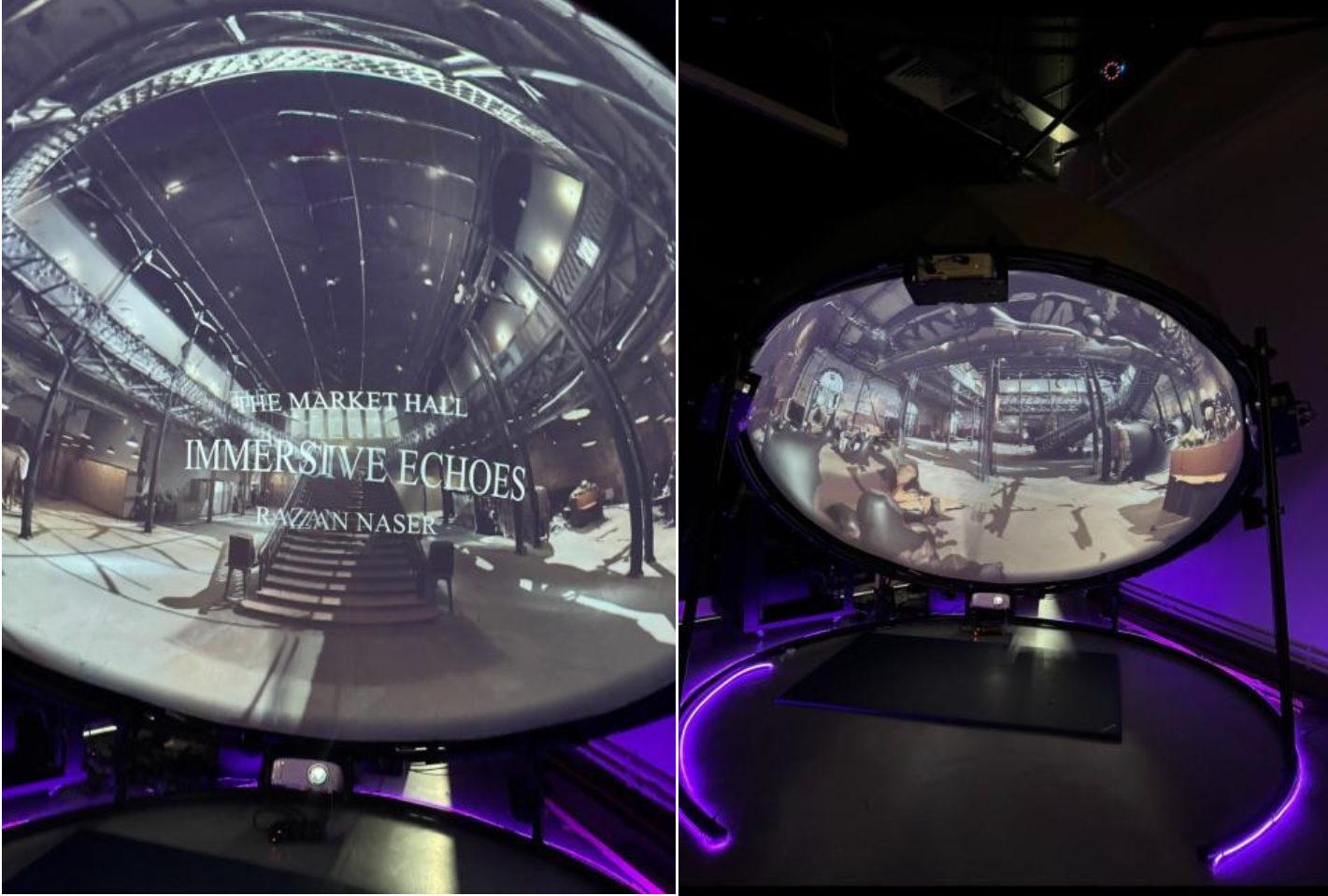 Images: User testing in the Immersive Vision Lab (work and phographs by Razan Naser)
Images: User testing in the Immersive Vision Lab (work and phographs by Razan Naser)Breath of Light: The Politics and Poetry of Breathing/ Deborah Adeoye
Deborah began to explore the politics of breathing in relation to the cost of medical oxygen in Nigeria compared to average income. She then created a fulldome experience that in her words “transforms the act of breathing into a dynamic interplay of light and sound.” Using sensors she allowed audience members to create light and sound from their breath and thus create a shared reflection on what it means to do something as simple as breathe. She writes:
"Breath of Light" contemplates how access to air- an often-assumed free commodity is circumscribed by systems of privilege, geography, and infrastructure. Through interaction, immersion, and inquiry, this project examines the poetics and politics of respiration, turning invisible rhythms into visible provocations.”


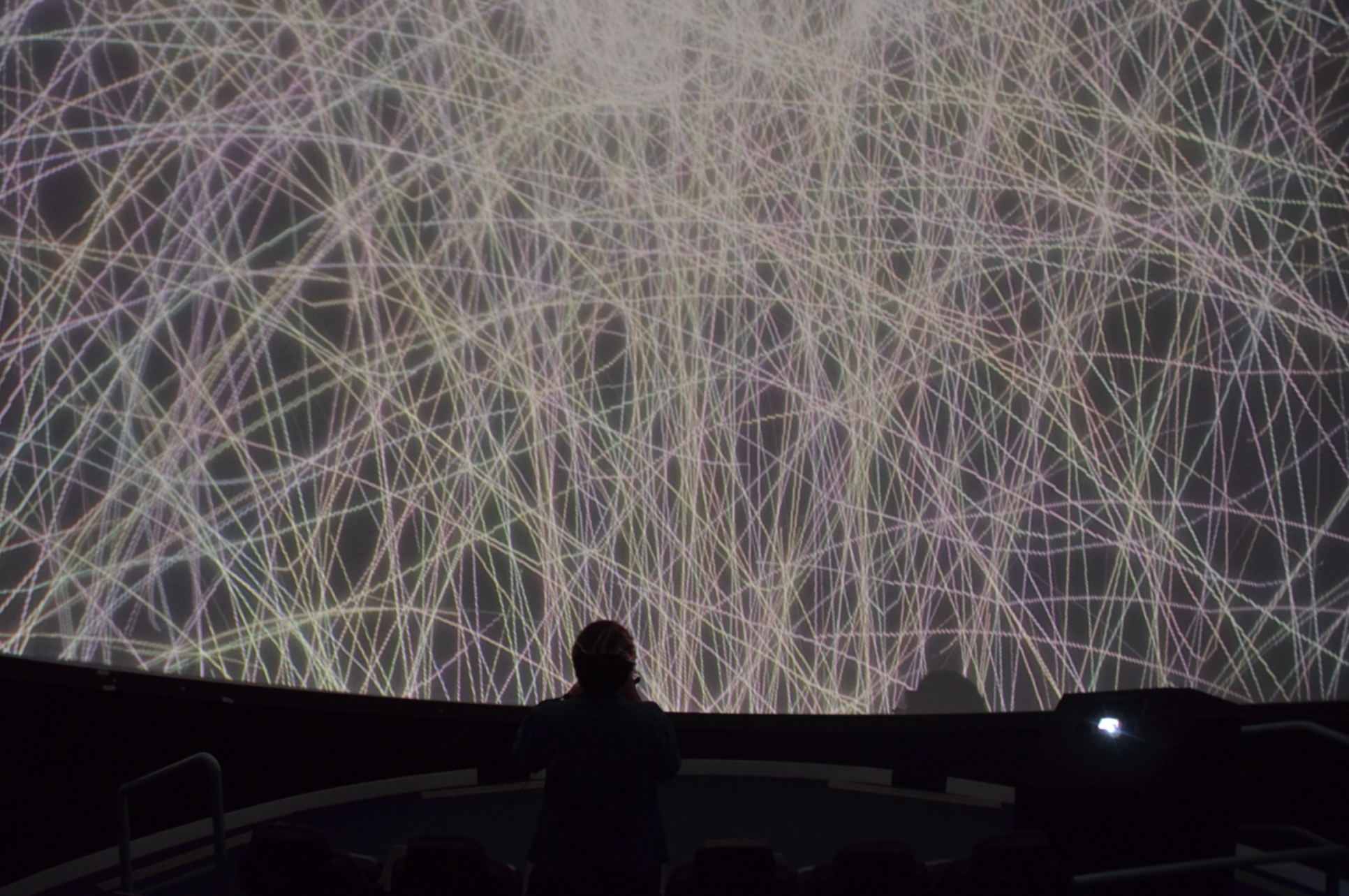
Cool Kids Can Cook/ Oliver Li
Oliver came from a background in illustration and in Term 1 he worked with Tamar Grow Local to produce illustration and animation that would accompany a cookery book he had been involved in previously. He used an experience design approach to research to further explore Plymouth City Council’s agenda of 'People Connecting Through Food' by undertaking community based workshops in schools as well as exploring how Makey Makey could directly connect to food and offer new ways for children to interact with it while he engaged children in understanding where food comes from, the relevance of seasonal vegetables and how to use fresh vegetables in season to make a meal.
Oliver was also interested in the connection between 'digital lives' and food, especially the ways in which the digital
domain may be influencing children's understanding around food and how this could intersect with what is local, diverse, healthy and sustainable.

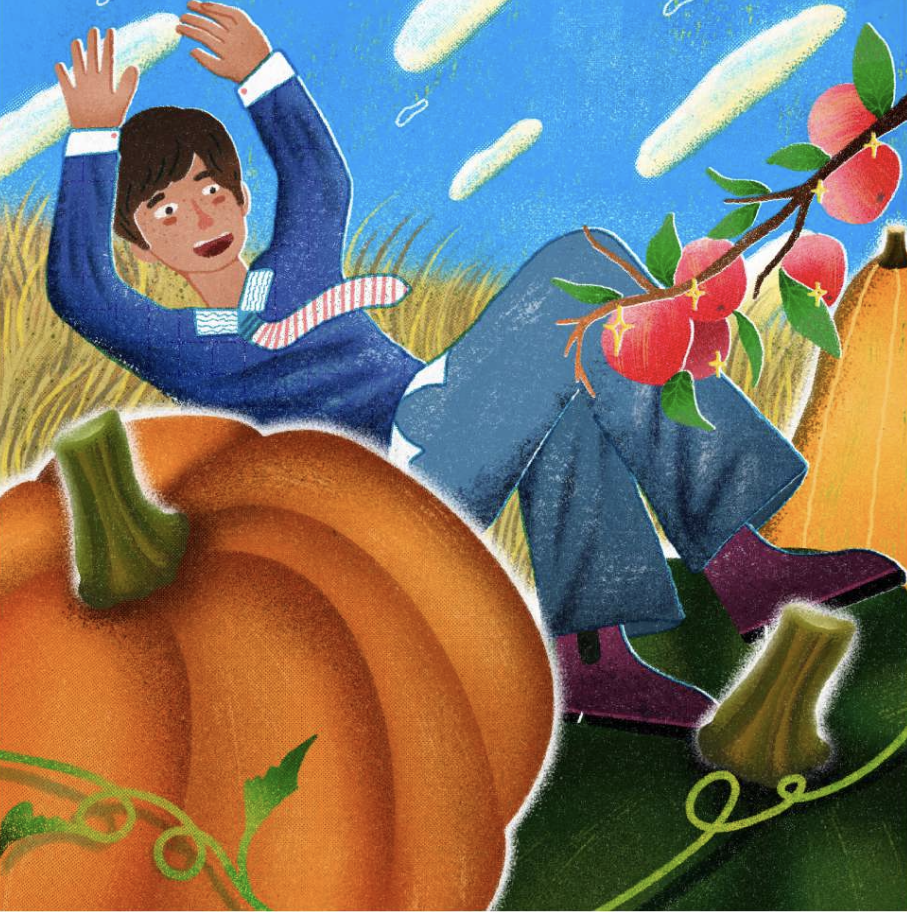

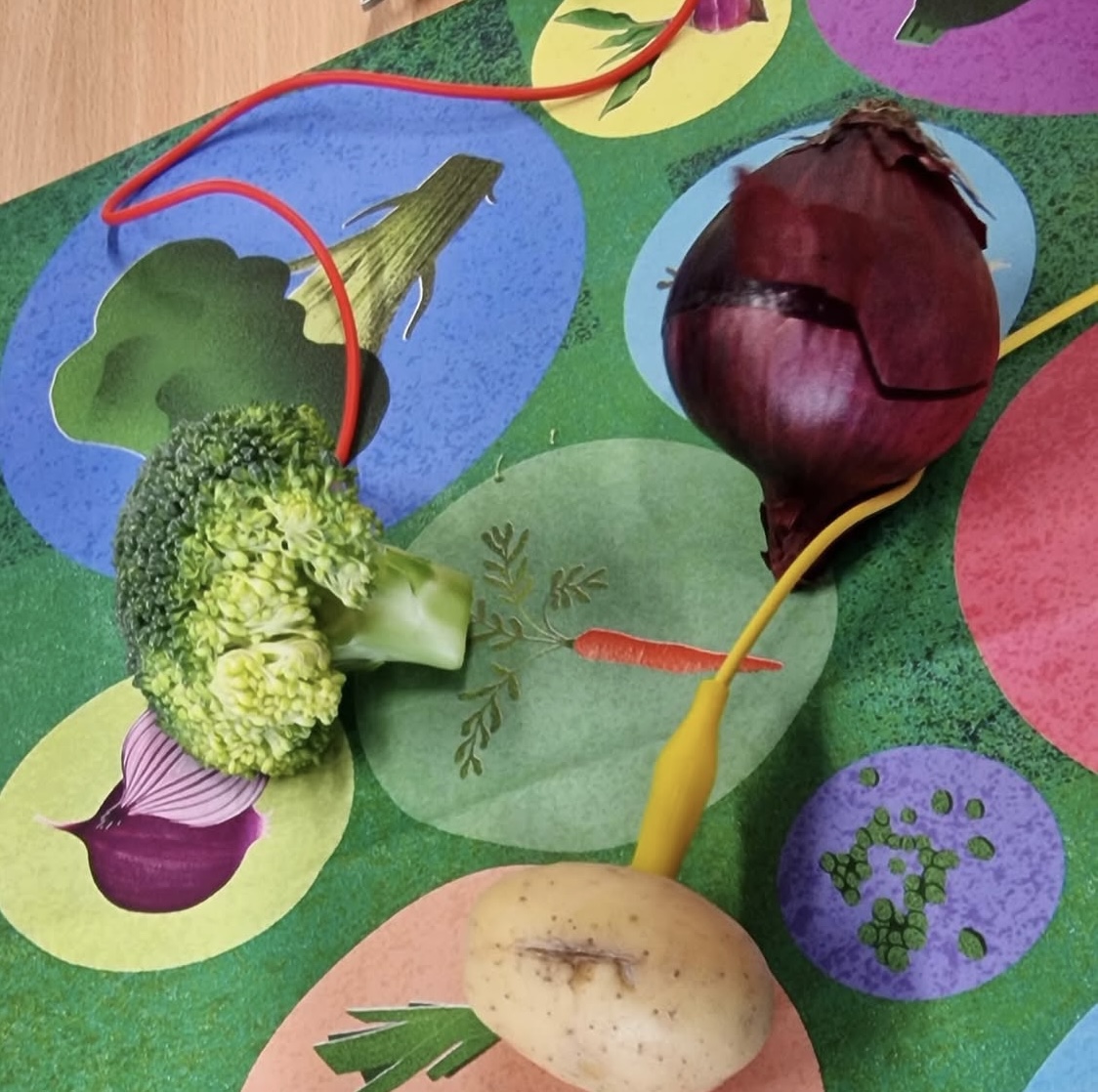
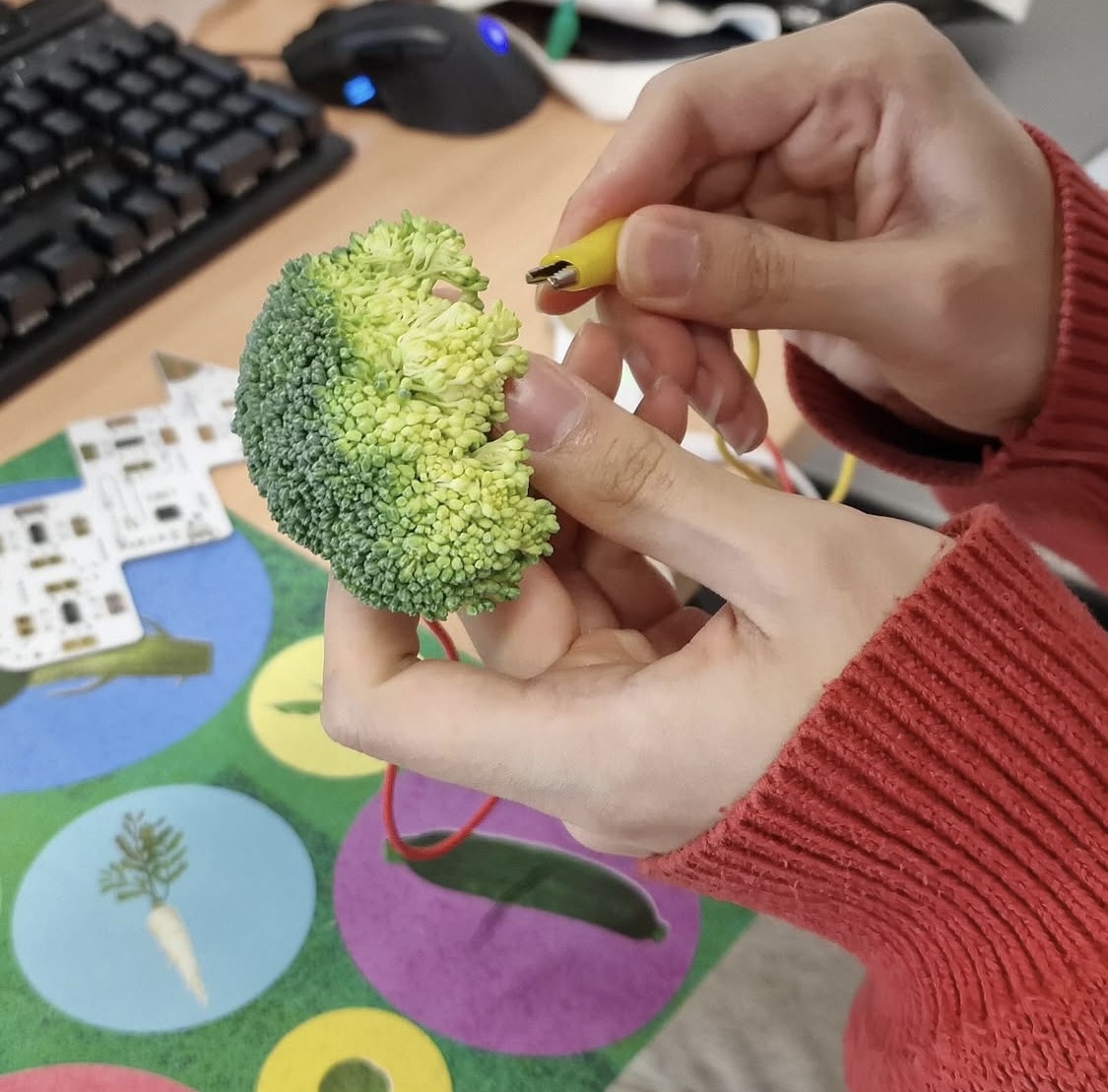
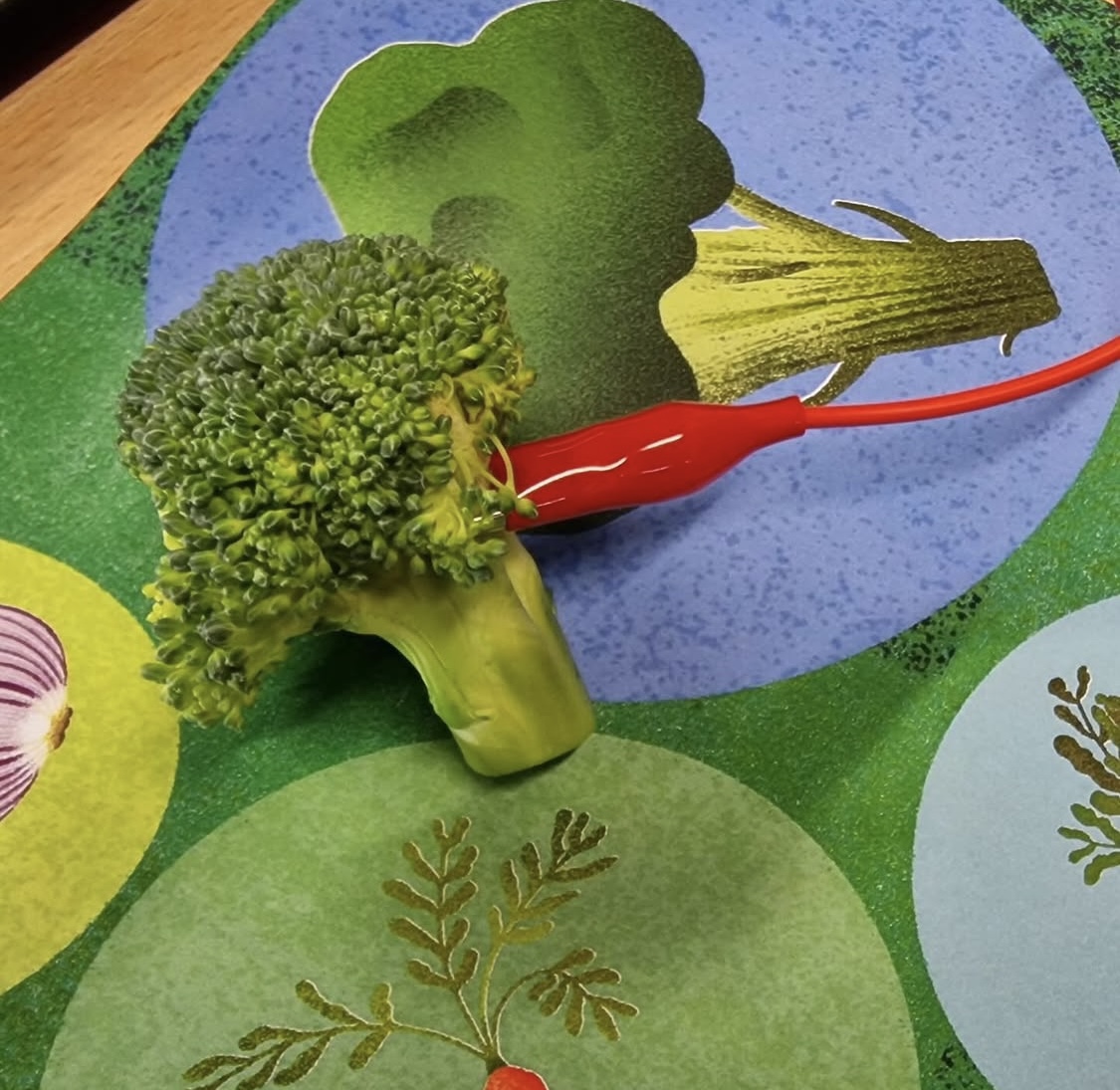
 Images: Illustration by Oliver Li/ photography by the University of Plymouth
Images: Illustration by Oliver Li/ photography by the University of PlymouthSerenity Escape/ Razan Naser
In Term 1, Razan decided that she would focus on creating an fulldome piece based on the topic of wellbeing. Specifically, she was interested research that has shown how young adults her age are suffering from stress and anxiety. In relation to this she wanted to create an immersive experience to help the audience feel calm. Using research methods taught in the term she decided to settle on an underwater theme.
 Images: Sensory Ethnography approach to research (Images by Razan Naser)
Images: Sensory Ethnography approach to research (Images by Razan Naser)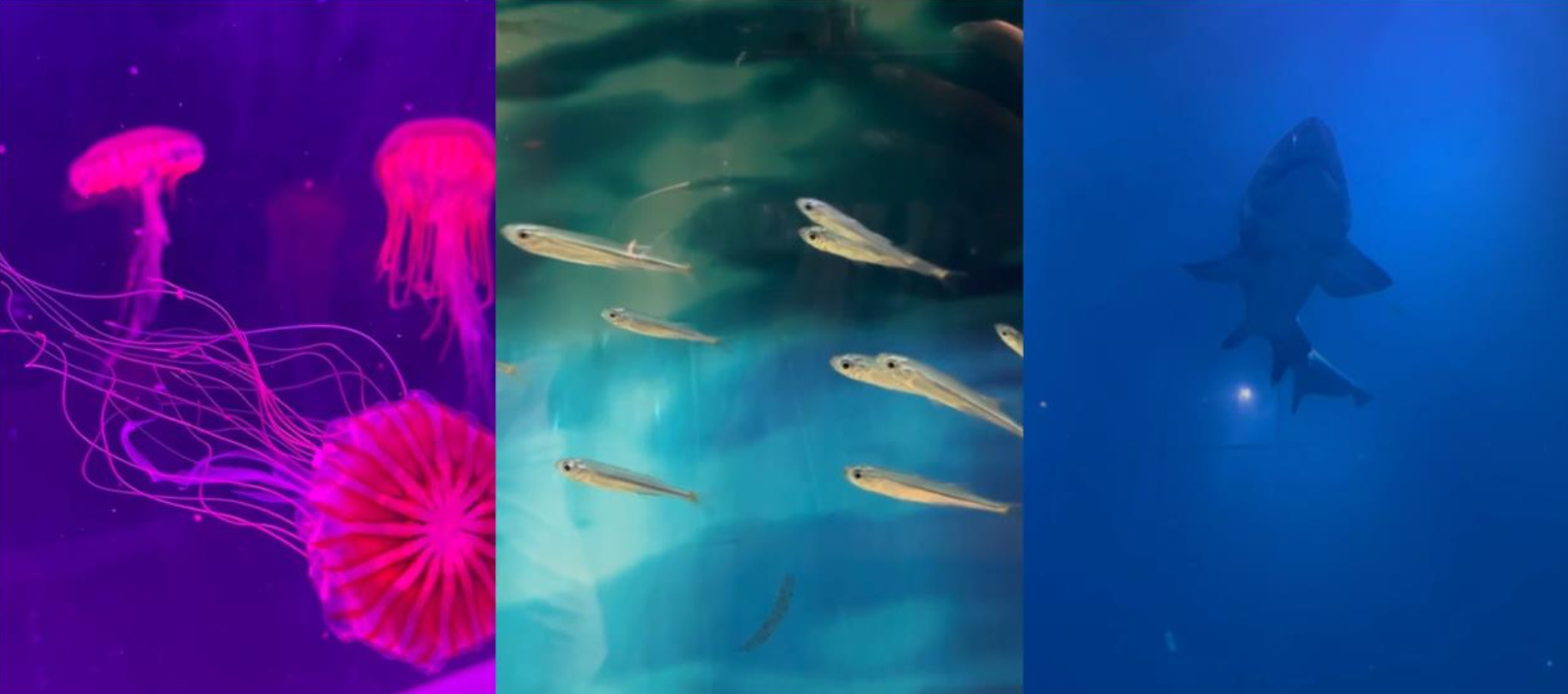 Images: Field trip to Plymouth aqurium (Images by Razan Naser)
Images: Field trip to Plymouth aqurium (Images by Razan Naser)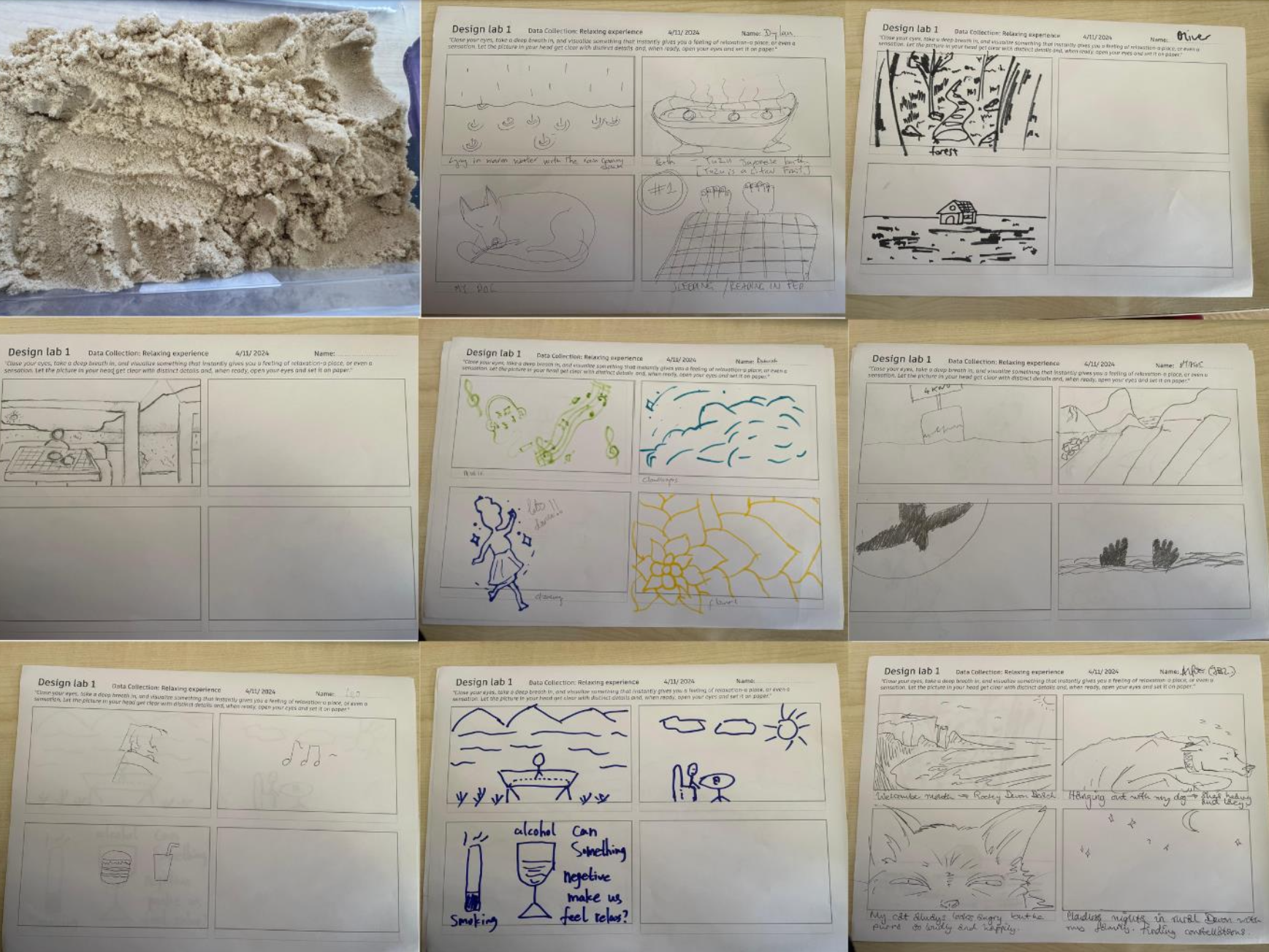 Images: A Cultural Probe approach to research conducted with peers (Images by Razan Naser)
Images: A Cultural Probe approach to research conducted with peers (Images by Razan Naser)
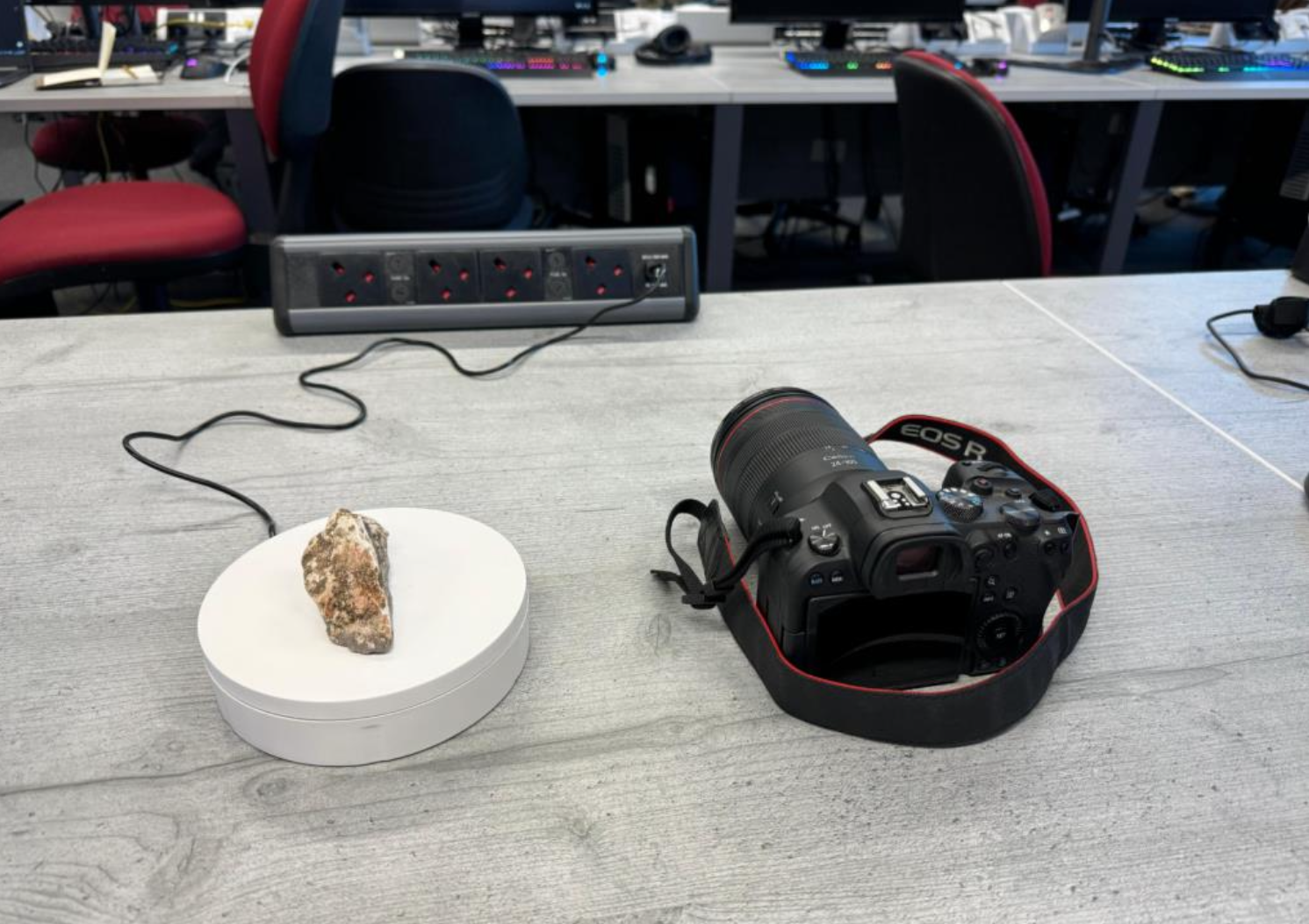
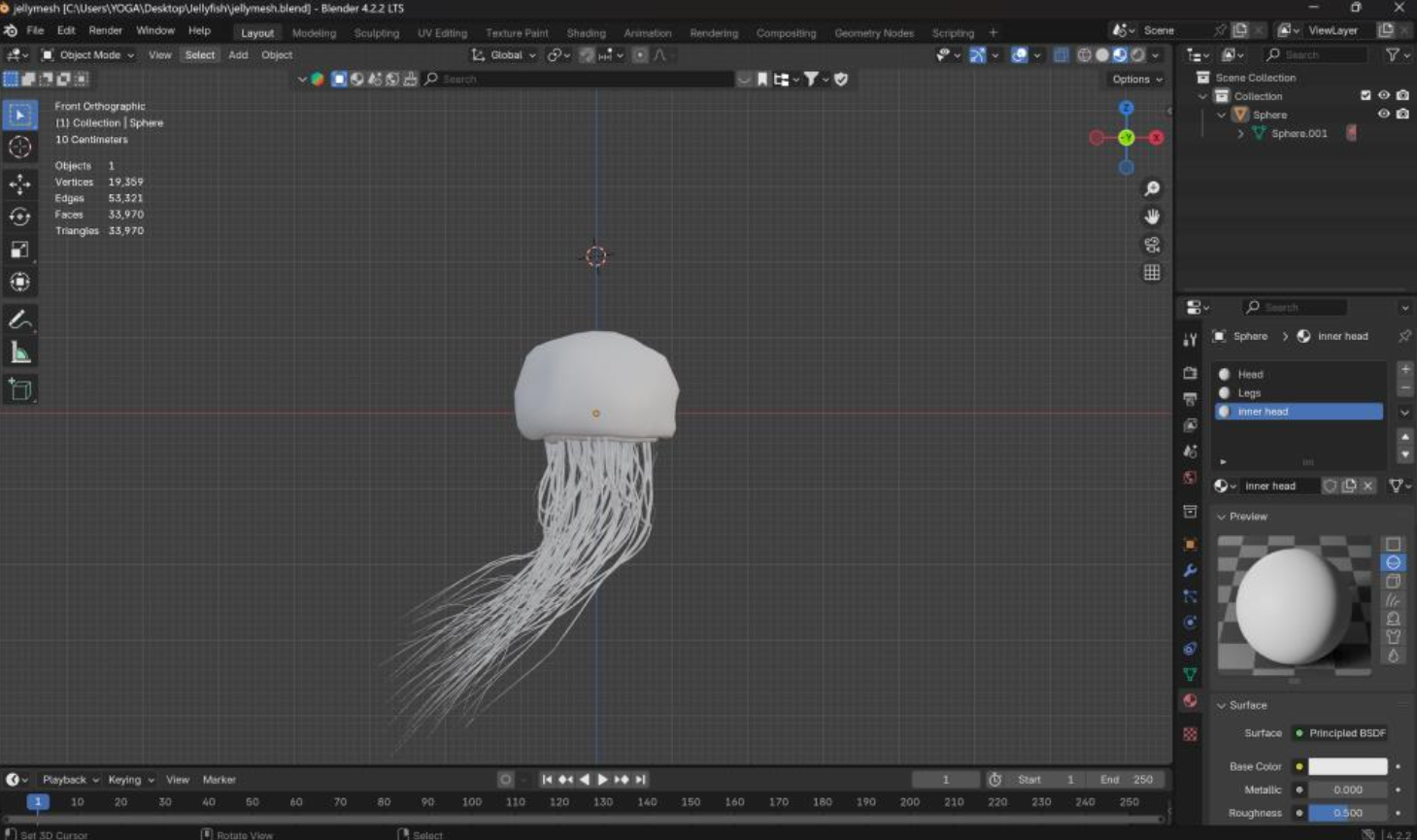
Student Work: 2023-24
Dada & Broodiest Flunkey/ Brandon Barnard
During Design Lab 1, Brandon focused on Dada and how this art movement might also relate to current issues. In response to this, Brandon created a series of tools to motivate others to draw on the Dada movement in their own artistic practice, such as creating an animated video to showcase a variety of Dada techniques and informing the audience of the meanings behind these.
Brandon undertook a great deal of practical experimentation that included a production of an animatic, the use of social media to distribute glimpses of his work in order to build up a sense of anticipation/suspense, an online interactive exhibition, and combining Unity software with hand-drawings to create a multifaceted experience by which the audience could engage with Dadaism in a contemporary context.



Images: All work and images by Brandon Barnard
Brandon drew on some of the research methods studied in class, such as Cultural Probes and Performance Ethnography to inform his work.
Taking a Cultural Probe approach, he handed out prints of the Mona Lisa to his peers and asked them to try to contradict what they saw in the image. He stated that he was influenced by one of the participants ripping the piece up, mirroring Arp’s (1920) work. Then, he noted the themes that arose from everyone’s alteration of the Mona Lisa which included femininity v. masculinity; value communication; art importance and preservation; contemporary/digital; perceived social status/class; emotions visible in the piece; and beauty. He went on to explore these concepts as he continued to develop his own experience design work.
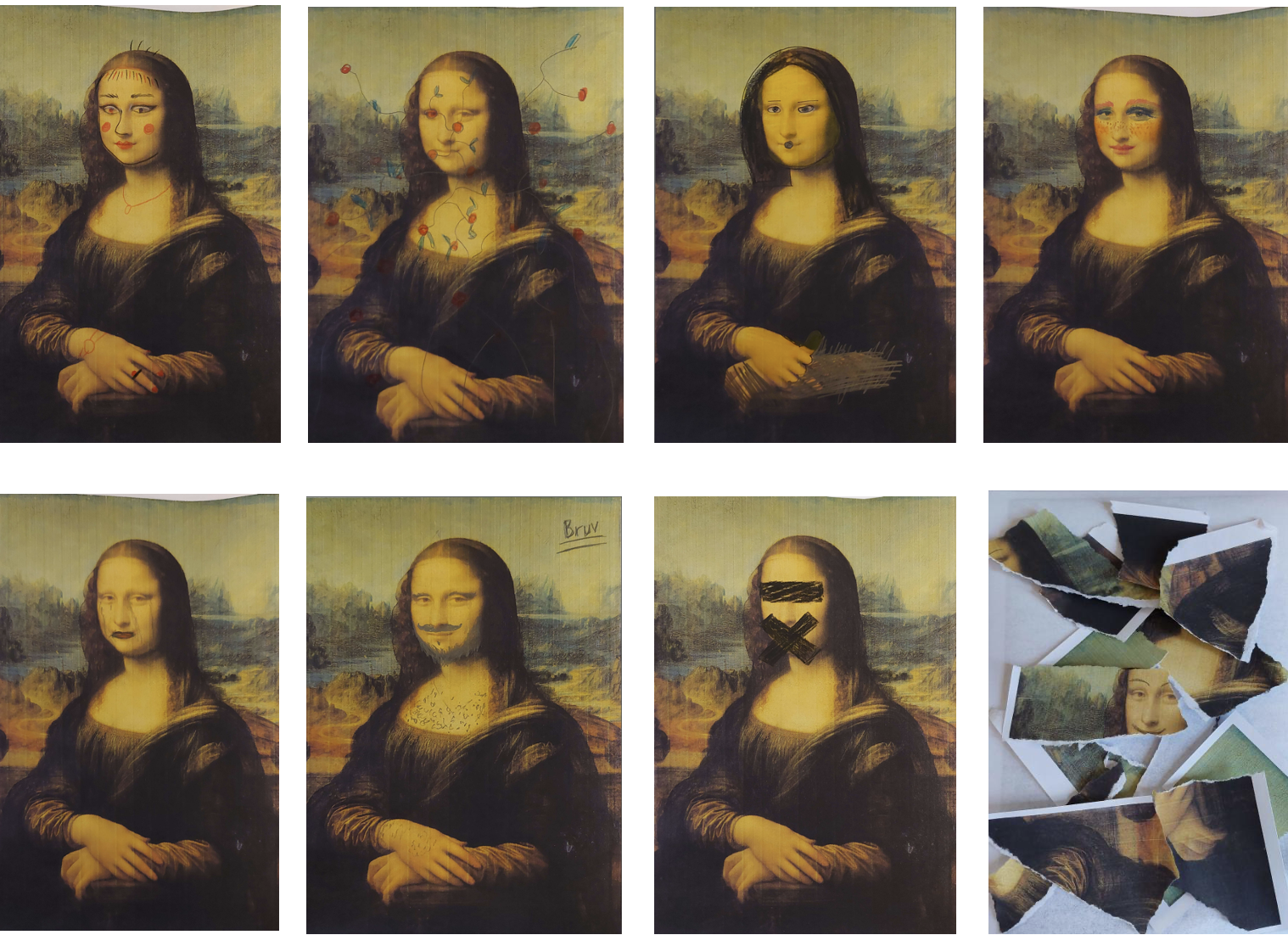
Image: Cultural Probe by Brandon Barnard

Image: Mindmap connecting aspects of learning during Design Lab 1 & 2 to the prodution of Broodiest Flunkey by Brandon Barnard
Throughout both Design Lab modules, Tu maintained a focus on exploring ways of engaging the audience in understanding the perspectives of single parent families, specifically the mother and daughter dynamic. She did this through the creation of an interactive digital comic.

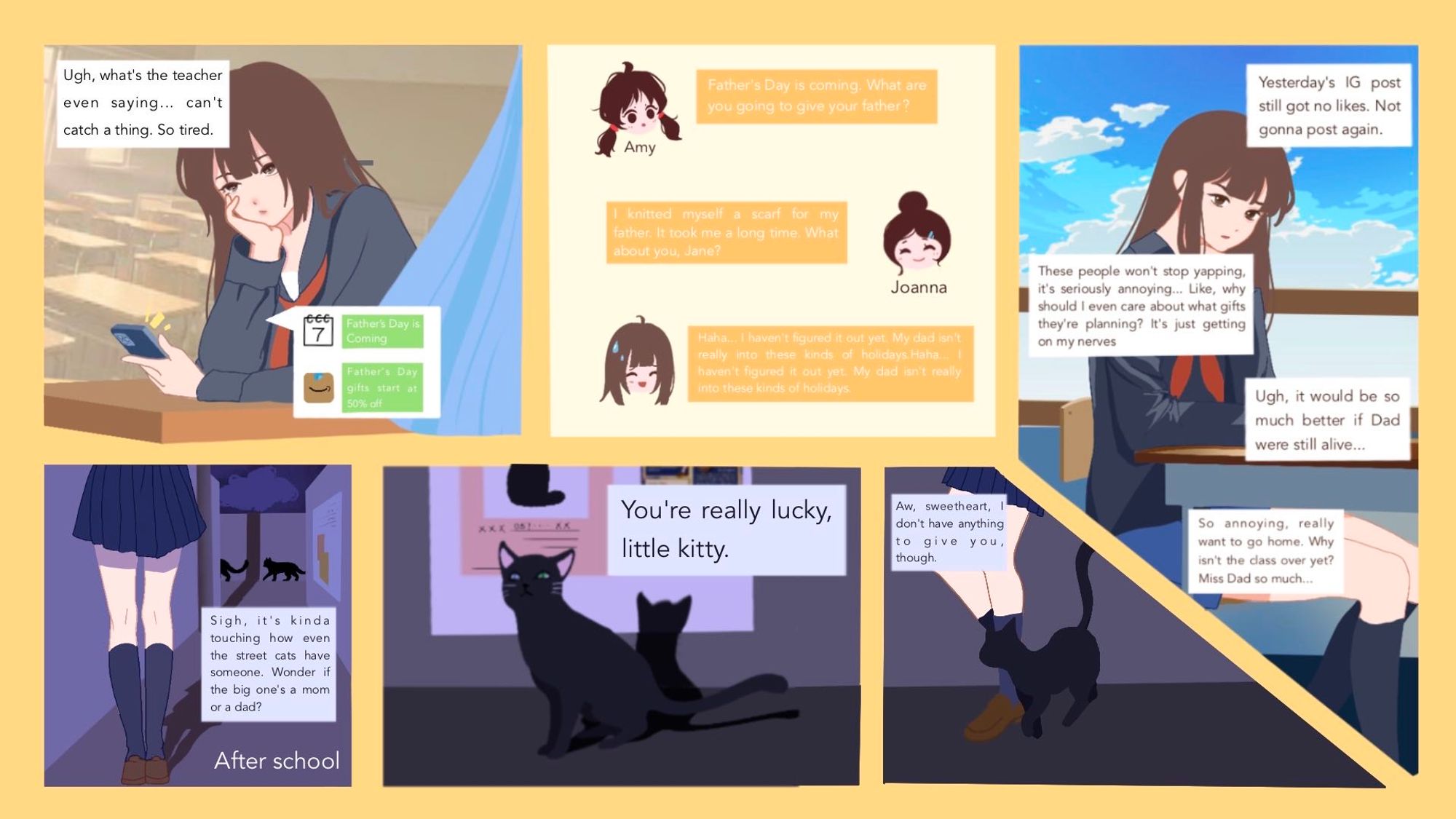


 Image: branching narrative design by Tu Jianan
Image: branching narrative design by Tu JiananIn the image above, the yellow box represents the plot development of the story, the pink box- all the options that the player may encounter in the comics, the green box-the impact on the plot after the player selects the option, and the purple box represents the impact of the choice on the daughter in the story.
The Journey of a Tomato/ Catherine Chendi Liu
Catherine began by researching food waste. From a literature review she discovered food is wasted at three different stages: growing, transportation and consumption. She also undertook informal interviews to find out about commonly wasted food types. From this she began exploring the production of a gravity game using Unity. She drew inspiration from games such as “Give me Toilet Paper” and “I am bread”. Finally, she decided to centre her game on looking after tomatoes. She modelled her concepts with paper prototyping, three mini games that represented the three stages of food waste. Fail a mini game and you must throw a tomato in the bin.




JoyFeel Labs/ Marina Reinhardt
Marina’s interactive performance asked the audience to answer a questionnaire about what makes them feel sad with a promise to banish that emotion forever through a performative tea ceremony with an AI bot.



Personality Visualisation/ Shiyin Li
Interested in the recent popularity of personality testing among you people in Asia, Shiyin started by exploring different types of personality testing and tarot and followed this up with survey that gathered further information about people’s interest and belief in personality testing.
In the final work an interaction device was made using Arduino to encourage people to undertake personality testing while meeting with friends for coffee or dinner. The final results are printed as a receipt that can be kept or gifted to friends.
 Image: Receipt designs (work by Shiyin Li)
Image: Receipt designs (work by Shiyin Li)